Ocean Vanguards
How Chile became a marine conservation leader
Bloomberg Philanthropies Vibrant Oceans II

Oceana’s biggest funder dramatically increases its commitment to ocean conservation
Tañon’s Return to Abundance
Wins for local fisherfolk in the Philippine’s largest marine reserve
SPRING 2019 OCEANA.ORG
Magazine
Michael R. Bloomberg, founder of Bloomberg Philanthropies, Oceana supporter and former Mayor of New York City
Board of Directors
Valarie Van Cleave, Chair
Ted Danson, Vice Chair
Diana Thomson, Treasurer
James Sandler, Secretary
Keith Addis, President
Gaz Alazraki
Monique Bär
Herbert M. Bedolfe, III
Sydney Davis
César Gaviria
Mária Eugenia Girón
Loic Gouzer
Jena King
Sara Lowell
Stephen P. McAllister
Dr. Kristian Parker
Dr. Daniel Pauly
David Rockefeller, Jr.
Susan Rockefeller
Simon Sidamon-Eristoff
Heather Stevens
Dr. Rashid Sumaila
Sam Waterston
Jean Weiss
Editorial Staff
Editor
Allison Guy Designer
Karen Radewald
Ocean Council
Susan Rockefeller, Founder
Kelly Hallman, Vice Chair
Dede McMahon, Vice Chair
Anonymous
Samantha Bass
John and Violaine Bernbach
Rick Burnes
Marcella Cacci
Vin Cipolla
Barbara Cohn
Ann Colley
Edward Dolman
Susanne Elstein
Kay Fernandez
Marsha Garces Williams
Brian and Linda Gold
Carolyn Groobey
J. Stephen and Angela Kilcullen
Ann Luskey
Peter Neumeier
Carl and Janet Nolet Ellie Phipps Price
David Rockefeller, Jr.
Andrew Sabin
John and Regina K. Scully Sutton Stracke Vivien Sylvester
Mia M. Thompson
Dr. David Treadway
Edgar and Sue Wachenheim III David Max Williamson Raoul Witteveen Leslie Zemeckis
Oceana Staff
Chief Executive Officer Andrew Sharpless President Jim Simon
Chief Scientist & Strategy Officer
Michael Hirshfield, Ph.D. Chief Policy Officer, North America Jacqueline Savitz
Interim Executive Director for Oceana in Europe
Pascale Moehrle, Senior Vice President, Strategic Marketing & Communications Matthew Littlejohn
Vice President, Belize Janelle Chanona
Executive Director, Oceana Canada Joshua Laughren
Vice President, Mexico Pedro Zapata
Vice President, Peru Patricia Majluf, Ph.D. Vice President, Chile Liesbeth van der Meer
Vice President, Philippines Gloria Estenzo Ramos, J.D. Vice President, Brazil Ademilson Zamboni, Ph.D. Vice President, Development Nancy Golden
Chief Financial Officer Christopher Sharkey
Chief of Staff Leslie Jones
Deputy Vice President, U.S. Pacific Susan Murray
Oceana is published by Oceana Inc. For questions or comments about Oceana, or to subscribe to Oceana, please call our membership department at +1.202.833.3900, e-mail membership@ oceana.org or write Oceana, Member Services, 1025 Connecticut Ave. NW, Suite 200, Washington, DC 20036 USA
Oceana’s Privacy Policy: Your right to privacy is important to Oceana, and we are committed to maintaining your trust. Personal information (such as name, address, phone number, e-mail) includes data that you may have provided to us when making a donation or taking action as a Wavemaker on behalf of the oceans. This personal information is stored in a secure location. For our full privacy policy, please visit Oceana.org/privacypolicy.
2
Please Recycle.
Features Departments

For the win
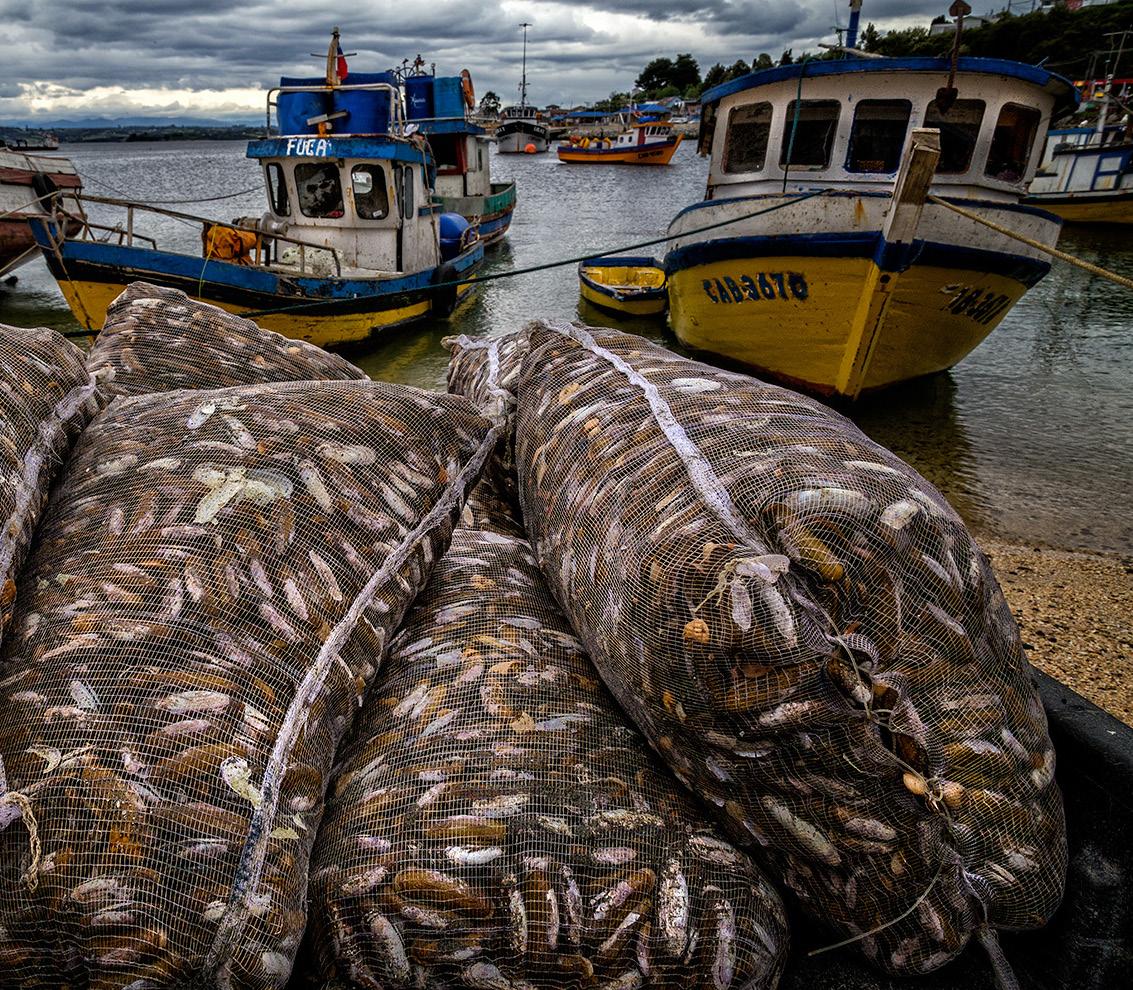
To help you navigate Oceana’s work, we’re introducing icons for our five major campaigns. Look for them throughout the magazine to learn more about what
focuses on. Curb Pollution Stop Overfishing Reduce Bycatch Chile’s ocean leadership 12
Rebuilding ocean abundance is an important lever for reducing climate change
Oceana
CEO note
The Philippines enforces a ban on bottom trawling, Peru reduces single-use plastic, and more
Stopping seismic blasting in the U.S., Canada invests in fisheries rebuilding, and more
Ubisoft Future
Valentina Marchetti Ocean vanguards New laws and parks make Chile a global leader in marine conservation Tañon’s
to abundance Fisherfolk and
restore
reserve Oceana victories Highlights from Oceana wins in 2018 and 2019 Supporter spotlight Bloomberg Philanthropies’ Vibrant Ocean Initiative enters its second phase Ask Dr. Pauly China’s vast and uncertain wild fish catch Events Ocean leaders celebrate Oceana’s new headquarters Fin win The misunderstood butterfish, a favorite of Mark Bittman Parting shot Sardines swarm in Moalboal, the Philippines 5/ Empowered fisherfolk in the Philippines 18 6/ 5/ 12/ 10/ 18/ Protect Habitat Increase Transparency 24/ 25/ 28/ 30/ 32/ 34/ © Oceana/Claudio Almarza © Oceana/Melissa Forsyth
News & notes
Q&A
Games of London’s
path
Oceana partner to
a Philippine marine
Your support makes an ocean of difference
Please Give Generously Today
A healthy, fully restored ocean could sustainably feed more than 1 billion people each day.
Call us today at (202) 833-3900, email us at info@oceana.org, visit www.oceana.org/give or use the envelope provided in this magazine to make a donation. Oceana is a tax-exempt 501(c)3 organization and contributions are taxdeductible to the fullest extent of the law.
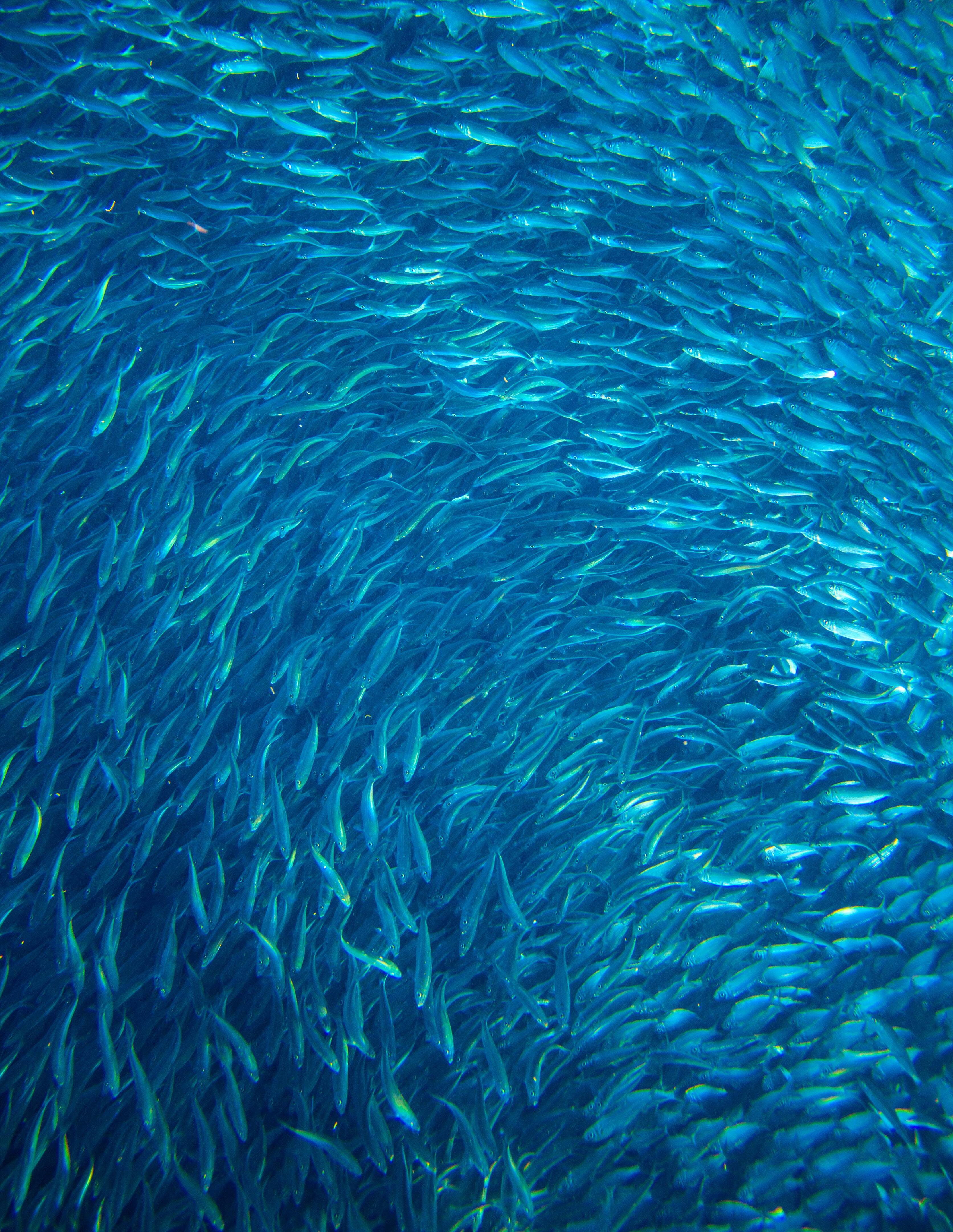
4
© Shutterstock/Davdeka
Twenty years ago I stood in a grassy field on the sidelines of my young daughter’s soccer game. When the referee blew the whistle for halftime, I turned to the man next to me and introduced myself. I was surprised to realize that he led an important national mortgage finance provider. We began a brief conversation about his challenges.
Trying to convey sympathy for his enormous responsibilities, I mouthed the truism, “You can’t manage what you can’t measure.”
“So be especially careful what you measure,” he responded.
It was a tart insight I’ve never forgotten.
Smart measurement-driven attacks on global problems is a signature of former Mayor Michael Bloomberg, now building a record of victories in ocean conservation. We are lucky to count him as one of Oceana’s largest benefactors. This year his Vibrant Oceans Initiative just entered its second phase, with the mission to “ensure that our oceans survive and thrive in the face of climate change.”
You’re certainly aware that climate change — a battle in which the Mayor has put himself on the front lines — impacts the oceans. Reefs die as the oceans warm and acidify. Food fish move north and south in search of colder water. A peer-reviewed study in Science Advances (27 February, 2019), lead-authored by Dr. Rashid Sumaila of the University of British Columbia (and Oceana board member), concludes that millions of metric tons in seafood catch, and billions of dollars in fishers’ revenues, will be protected by successful implementation of the Paris Agreement.

What you may not know is that rebuilding ocean abundance is an important lever for reducing climate change.
Why is that?
Analyses by the UN’s Food and Agricultural Organization and the World Resources institute conclude that agriculture contributes 14 to 18 percent of all human greenhouse gas emissions worldwide. Even at the low end, that’s more than the transportation sector emits. Livestock production is an intensive emitter of greenhouse gasses, much of it in the form of methane emissions from both ends of the animals.
Oceana estimates that the climate equivalent of one hamburger is the same as the typical drive to work in the United States. So, every time you eat a fish filet sandwich instead of a hamburger, you help control climate change.
That means if you care about the climate, you want as many people eating seafood as the oceans can sustain. A rebuilt and abundant ocean could provide food sufficient to feed a billion people a seafood meal every day, forever.
Oceana and our allies are winning the policy victories to make that happen. We are happy to report some new ones in this latest issue of our magazine.
We are also happy to report them to the Mayor, whose generosity has driven our success in winning policies that can stop overfishing and increase abundance in the Philippines, Brazil, Chile, and Peru and in blocking the expansion of offshore oil drilling in the United States. The Mayor’s longstanding leadership on climate change and public health comes together in his extraordinary commitment to delivering practical, measurable increases in ocean fishery abundance.
Thank you, Mayor Bloomberg. And thanks to all of you whose generosity to Oceana makes possible the policy advances that restore and protect a healthy, abundant ocean.

For the Oceans, Andrew Sharpless CEO Oceana

SPRING 2019 | Oceana.org5 Note
© Shutterstock/Richard Whitcombe
For the Win
After two decades, the Philippines enforces ban on destructive inshore bottom trawling
In the Philippines, a ban on bottom trawling within 15 kilometers of the coast has been on the books since 1998, but the law hasn’t been enforced. In November, Philippinei sw government agencies signed a memorandum instituting rules that will enforce the ban throughout the country, in an area encompassing 226,000 square kilometers.
Bottom trawling catches fish using heavy nets dragged along the seafloor. Trawl gear indiscriminately nets juvenile fish, spawning adults and endangered animals, and can destroy fragile coral reefs and seagrass beds in minutes.
Under the new rules, which went through stakeholder consultations and include Oceana policy recommendations, fishermen must surrender their trawling gear, and violators will face stiff penalties including fines, confiscation of their equipment and jail time. Trawlers will be re-trained to use new fishing gear and pursue alternative livelihoods.
Chile passes law increasing fisheries data transparency and establishing criminal liability for illegal fishing
In Chile, a complex web of illegal fishing has undermined plans to recover overfished species like common hake. A new law aims to equip the National Fisheries and Aquaculture Service, or Sernapesca, with the funding and tools to fight illegal fishing at all stages in the supply chain.
Under the new law, Sernapesca’s 1,000-person staff will gain 250 new members, who will mainly focus on monitoring fish landing sites and enforcing catch quotas. The law also extends criminal liability for illegal fishing to transporters, processors, vendors and other middlemen — where the most money from criminal activity is to be made — while legalizing subsistence and survival fishing.
Oceana has advocated for the modernization law for the past three years, and introduced one of its key components: mandating that the government make fishing vessels’ satellite monitoring data publicly accessible. This will enable better enforcement of nofishing rules in protected areas and will help apprehend illegal fishers.

6
Anemonefish in Moalboal, the Philippines
© Steve De Neef
Exploitation levels The blue line refers to the mortality caused by fishing, which should be below 1.
Conservation levels
The yellow line represents weight of the adult population. Ideally it should be above 1 and show an increasing trend.
Fish stocks recover in the Northeast Atlantic
Many fish stocks are starting to bounce back in the seas of northern Europe, payoff for effective conservation policies on national and international levels and Oceana’s campaign for the establishment and enforcement of science-based quotas. Overfishing in this region has been slowly but steadily declining over the last decade, a 2018 European Commission report indicated. As fishing pressure eases, researchers are also seeing a return of valuable large-bodied species, like cod and hake, which suffer disproportionately from overfishing. Scientists attribute the region’s reviving fish to scientific catch limits, fishing gear changes and the creation of protected areas.
Plastic is a major ocean pollutant.
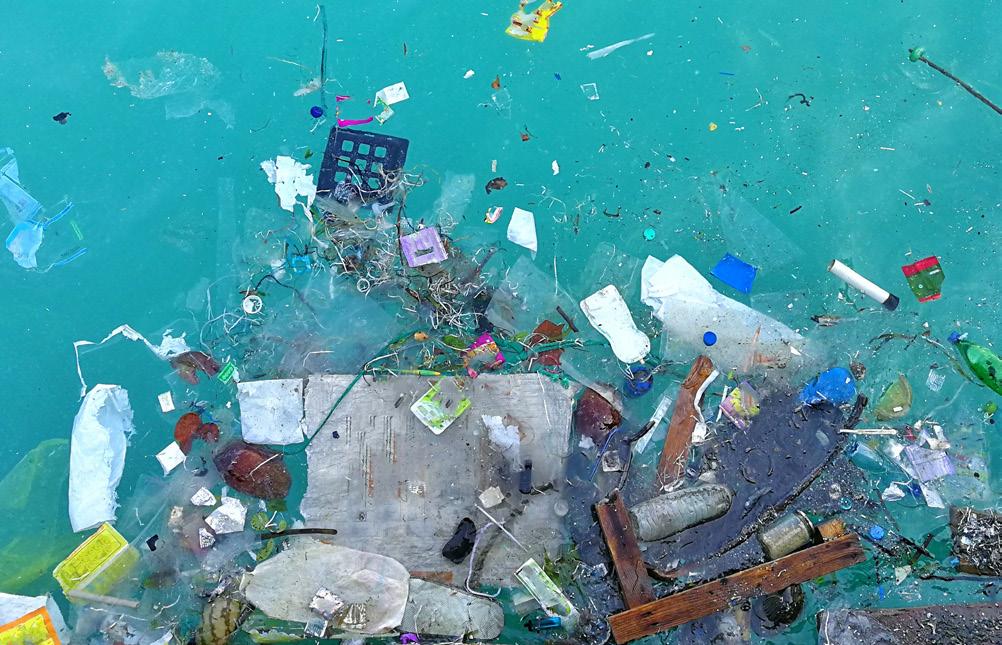
Peru passes legislation to significantly reduce single-use plastics
© Shutterstock/ Mr.Anaked
Spanish government creates the Mediterranean’s second-largest marine national park
After more than a decade of campaign work by Oceana, including six research expeditions, the Spanish government increased the size of Cabrera National Park from 100 to 900 square kilometers. This increase makes Cabrera the secondlargest marine national park in the Mediterranean Sea and the first site to formally protect deep-sea corals. The park will also provide shelter to important species including marine mammals like sperm whales and dolphins and large fish like bluefin tuna. It is the Mediterranean’s deepest protected area at over 2,000 meters.
In December, Peru joined the global fight against plastic pollution, with Congress announcing new legislation to regulate the manufacture and use of disposable plastics including bags, utensils, straws and foam packaging. The law sets one- to three-year deadlines to limit the manufacture of single-use plastics, establish a tax on plastic bags and mandate that plastic bottles be 15 percent recycled material. The law also bans disposable plastics from Peruvian beaches and protected areas, where they are currently a major pollutant.
Oceana led a year-long campaign in favor of the new law, meeting with supporters and opponents of the plan, and deploying a communications strategy to win over lawmakers.
SPRING 2019 | Oceana.org7
2003 2004 2005 2006 2007 2008 2009 2010 2011 2012 2013 2014 2015 2016
0.00 0.50 1.00 1.50 2.00
News + Notes
Last November, the National Marine Fisheries Service authorized five companies to harass or harm marine mammals in the course of using seismic airguns, powerful devices used to explore for offshore oil and gas. In December, Oceana and allies at eight environmental advocacy groups sued the Fisheries Service, alleging that the harassment authorizations violate the Marine Mammal Protection Act, the Endangered Species Act, the National Environmental Policy Act and the Administrative Procedure Act.
The blast zone — the area at risk from seismic airgun blasting — stretches from Cape May, New Jersey to Cape Canaveral, Florida. This region is home to commercially important fish and rare wildlife including critically endangered North Atlantic right whales, now thought to number near 400.
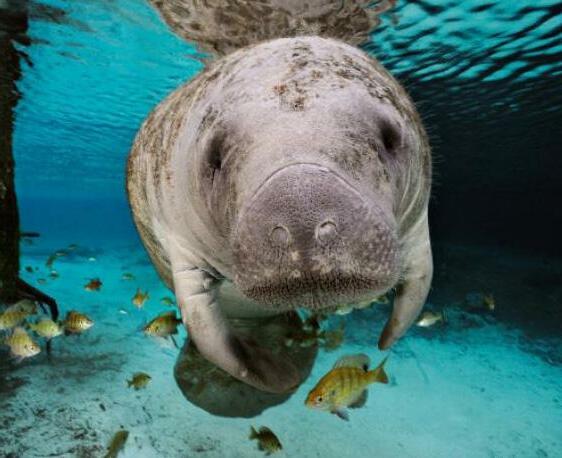
Seismic airguns, which shoot compressed air at the seafloor, are so loud that they can be detected by marine microphones thousands of miles away. As dozens of studies have confirmed, the constant din of these blasts — as often as every ten seconds, for months on end — can injure or even kill marine mammals like whales and dolphins, and can disrupt feeding, mating and other essential behaviors. The airgun blasts are also powerful enough to harm or kill fish eggs, larvae and plankton.
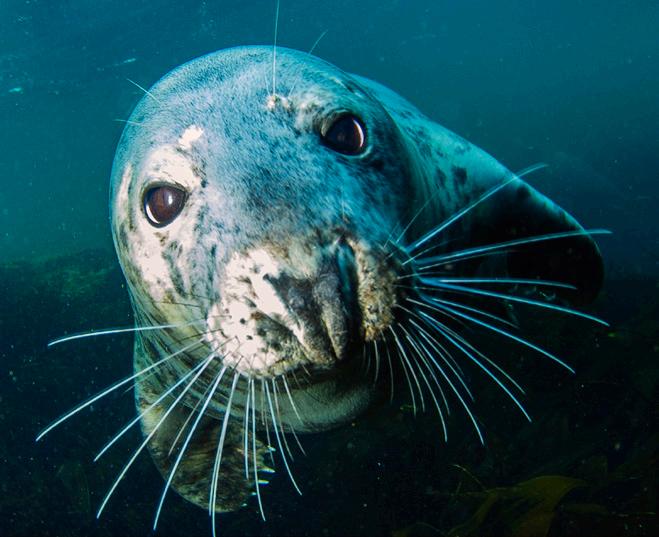
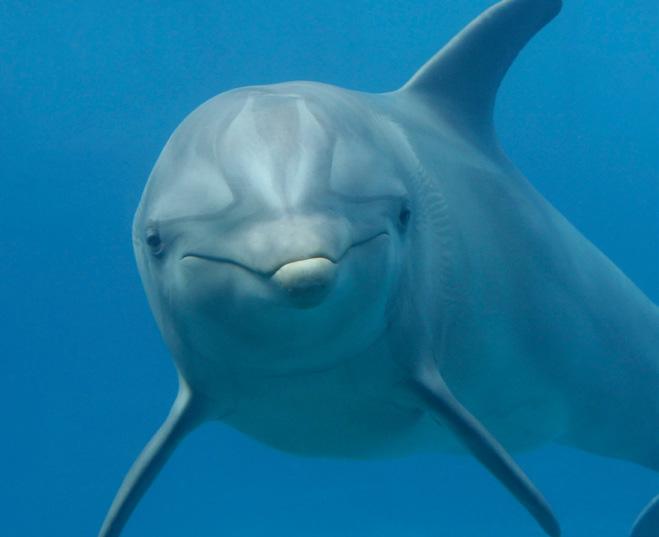

In 2018, the Trump administration vowed to open nearly all U.S. waters to offshore drilling. Seismic airgun blasting is the first step towards a full-blown offshore oil and gas development and risk of disasters like the 2010 BP Deepwater Horizon oil spill.
Spurred by Oceana’s organizing efforts, more than 320 municipalities on the east and west coasts have expressed opposition to or concern over offshore drilling and related activities. They are joined by over 2,000 elected officials and alliances representing over 45,000 businesses and 500,000 fishing families. Oceana and its allies also prevented the government from moving forward with seismic airgun permits during the government shutdown.
8
Oceana sues Trump administration to protect marine mammals from seismic airgun blasting
Critically endangered North Atlantic right whales are threatened by offshore oil development.
Bottlenose dolphin Gray seal
West Indian manatee
© Shutterstock/Wildestanimal
© Getty Images
© Oceana/ uan Cuetos
© Shutterstock/R. Maximiliane
Canada announces major investment to rebuild depleted fish stocks
In late November, federal Finance Minister Bill Moreau announced $107.4 million over five years for assessing and rebuilding fish stocks across Canada. The announcement comes after the early November release of Oceana Canada’s 2018 Fishery Audit, which revealed that only 34 percent of Canadian fish stocks can be considered healthy, and over 13 percent of fish stocks, including the iconic Northern cod, are critically depleted. Of the 26 critically depleted stocks, only three have rebuilding plans in place.
“This funding, along with a strengthened Fisheries Act with clear regulations, could set us on a path towards a more abundant ocean and a sustainable future for our seafood industry and coastal communities,” said Oceana Canada executive director Josh Laughren.
If all European Union fisheries abided by sustainable catch limits, seafood catches would jump by nearly 60 percent in less than 10 years, according to a recent Oceana report. At the end of 2018, the EU Agriculture and Fisheries Council voted to increase the number of sustainable catch limits in Northeast Atlantic waters from 53 to 59. By tonnage, 90 percent of the catch of fish stocks managed exclusively by the EU using catch limits are now on their way to sustainability. While an improvement, this is still insufficient to meet the EU’s legally binding 2020 deadline to make all fisheries sustainable.
Dolphin deaths highlight urgent need to reduce bycatch in Brazilian fisheries
In southern Brazil, Laguna’s famously cooperative bottlenose dolphins team up with local fishermen to corral and catch mullet. Sadly, 15 members of this unique population were killed last year, victims of illegal gillnets set at the mouth of the Tubarão River. Gillnets, which snag fish by their gills, also indiscriminately catch other animals, and are the main killer of Laguna’s bottlenose dolphins and the rare La Plata river dolphin.
The dolphins’ deaths, a triple-fold increase from 2017, highlight Brazil’s serious problem with bycatch, said oceanographer Ademilson Zamboni, the director of Oceana in Brazil. In early December, Oceana and its partners in the government met to discuss strategies to reduce commercial fisheries’ bycatch of endangered species, including seasonal closures to protect spawning grounds and migratory routes, and mandating the use of responsible fishing gear.
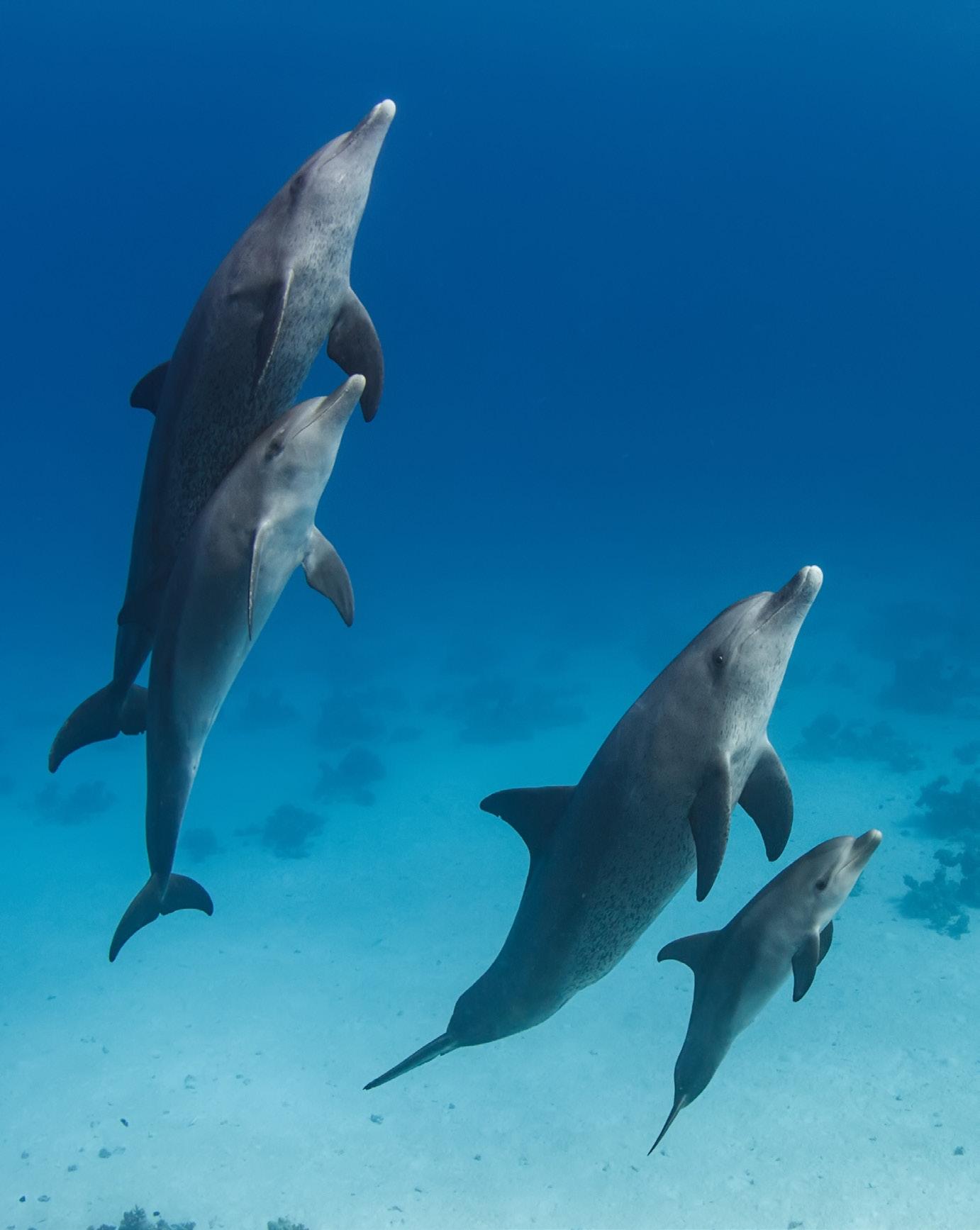
SPRING 2019 | Oceana.org9
Oceana report: Ending overfishing in the EU would boost seafood catches by 56 percent
A unique group of dolphins is falling prey to Brazil’s bycatch crisis.
© Shutterstock/ Willyam Bradberry
A light-hearted mobile game might seem like an odd match for the serious business of shark conservation, but Hungry Shark Evolution makes conservation part of the fun. The game’s maker, Ubisoft Future Games of London, has pledged $350,000 to Oceana as part of a partnership that includes in-game calls for donations and petition signatures. A special game bundle even includes the “Oceana baby” shark character, fittingly decked out in a Jacques Cousteau-style cap.
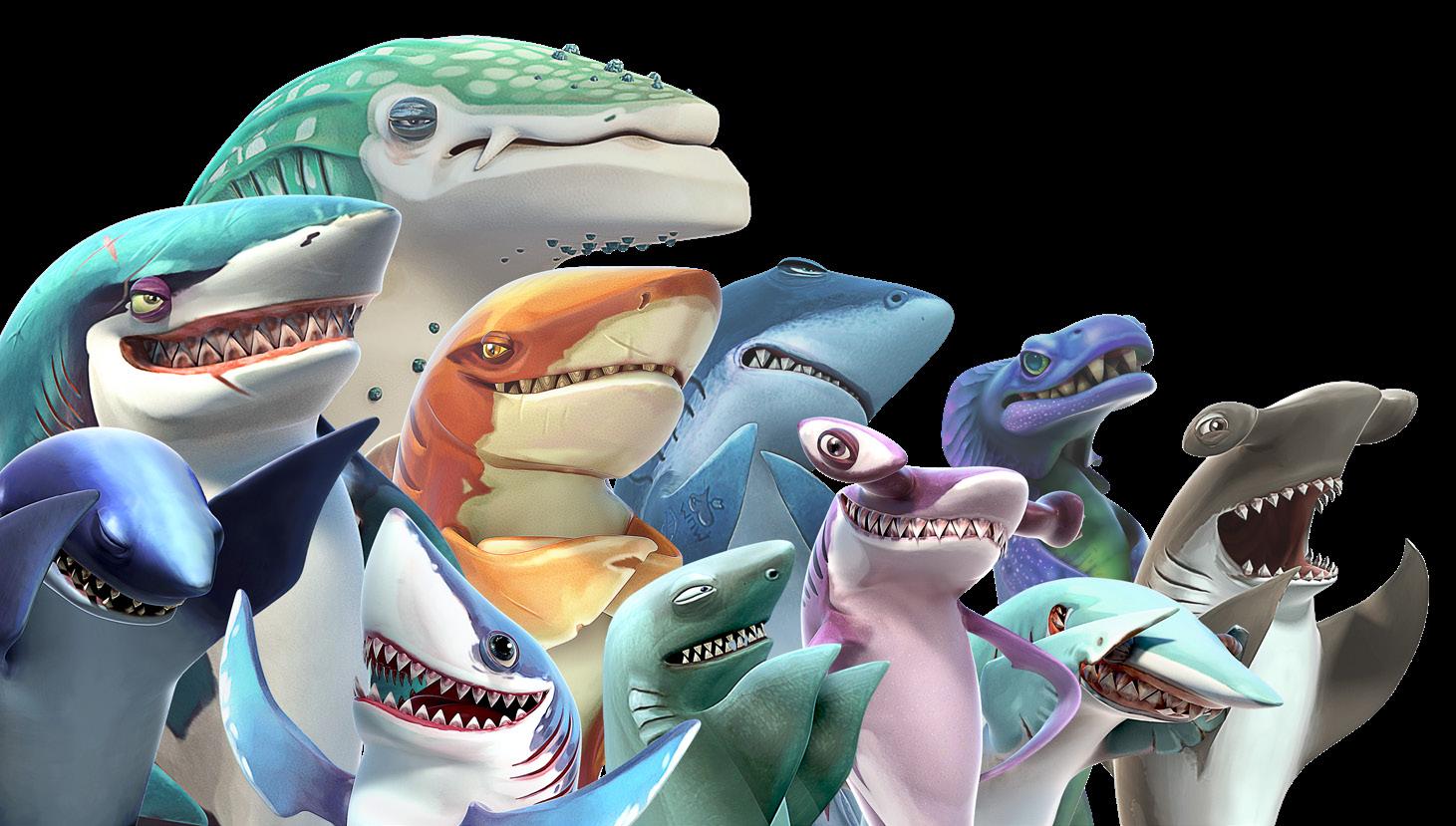
Oceana recently spoke with Valentina Marchetti, the marketing director for Ubisoft Future Games of London, about why this partnership has been
Ubisoft’s Valentina Marchetti videogame sharks help their
Q: Hungry Shark Evolution is incredibly popular, with tens of thousands of positive reviews in the Apple app store. What sets the game apart from others?
a hit with players. Prior to her current role, Marchetti worked in visual art, event organization and volunteer management.
Marchetti explained that Ubisoft is committed to enriching players’ lives with original and memorable gaming experiences. The company’s worldwide network of studios has created a diverse group of games including Assassin’s Creed, Just Dance, Far Cry, Rabbids, the Tom Clancy series and Watch Dogs. Future Games of London, which was founded in 2009 and acquired by Ubisoft in 2013, is a game studio specializing in original free-to-play games for mobile and tablet devices.
The game is perceived as a classic mobile gaming experience and that in itself is a great achievement. It was quite innovative at the time of release, visually stunning with 3D graphics, easy controls and funny gameplay. Since then, we’ve prided ourselves on keeping the game fresh and interesting for new and returning players alike: its community is alive and kicking, the team behind it keeps creating amazing content for it, app stores still love it … we couldn’t ask for more.
A: The idea of giving back is in our DNA. With a game focusing on sharks’ survival, it was natural to look for partners who could support such messages through their efforts in ocean preservation and shark research. Oceana was and still is at the top of our list; you have been great partners for many years. During this time, we had the pleasure to support campaigns around shark tagging research, turtle and hammerhead shark preservation, as well as fin trading bans. The campaigns were well received by the audience as well as by the developers. It is important for us that the studio is united in supporting our projects.
10
Q: Why did you decide to partner with Oceana?
explains how real-life counterparts
Q: Video games and ocean conservation aren’t exactly a traditional pairing. Why do you think the partnership with Oceana and other groups like Shark Week has been successful?
A: The gaming world, especially in mobile, is much more accessible and mainstream than many think. In other words, our players cover a large portion of the mainstream audience and they are interested in conservation topics; we just made the connection possible. Many people in the gaming community would like to hear more about how to give back, and we are committed to finding a way to reach them. Like Hungry Shark Evolution, other games are starting to do the same. Charitable initiatives around the world are booming — think about hackathons and game marathons to raise funds, influencer challenges and donations for exclusive in-game items.
In our case, I think the partnership has been so powerful because the cause is very clear and meaningful to the player. Our respective audiences share some interests and respond well to how our brands look and feel when aligned. This creates an enjoyable experience for them, on top of giving the feeling of “doing good” for our beloved ocean predators. We are committed to offering more experiences to grow this connection in the years to come. This is only the beginning, there is so much more that video games can do for ocean conservation.
Have you gotten any feedback from players about the partnership with Oceana or the in-game calls to action?
A: Yes! That’s the most rewarding part of it all. Players instantly understand what we are doing and why we are doing it. We had beautiful and sometimes surprising feedback. Let me quote some here:
Christopher Grande
Protect the hammerheads!
Steve Folger
Please save the hammerheads from shark finning. There are currently 10 species of them and i would not like to see them go.
ReversedUniverse
You guys are awesome and I love that you support oceana I buy it already and I love that I feel good for supporting!
ReaprGD 9 Jawsome!!! Overall the controls are good, gameplay is really good and the app itself runs good! #Help support Oceana!
XxxRed GamerxxX
Its all awesome Because the sharks are cool and the oceana pack is awesome because it helps all oceans and things in it:+1:very good game!! Is this game also @ London?
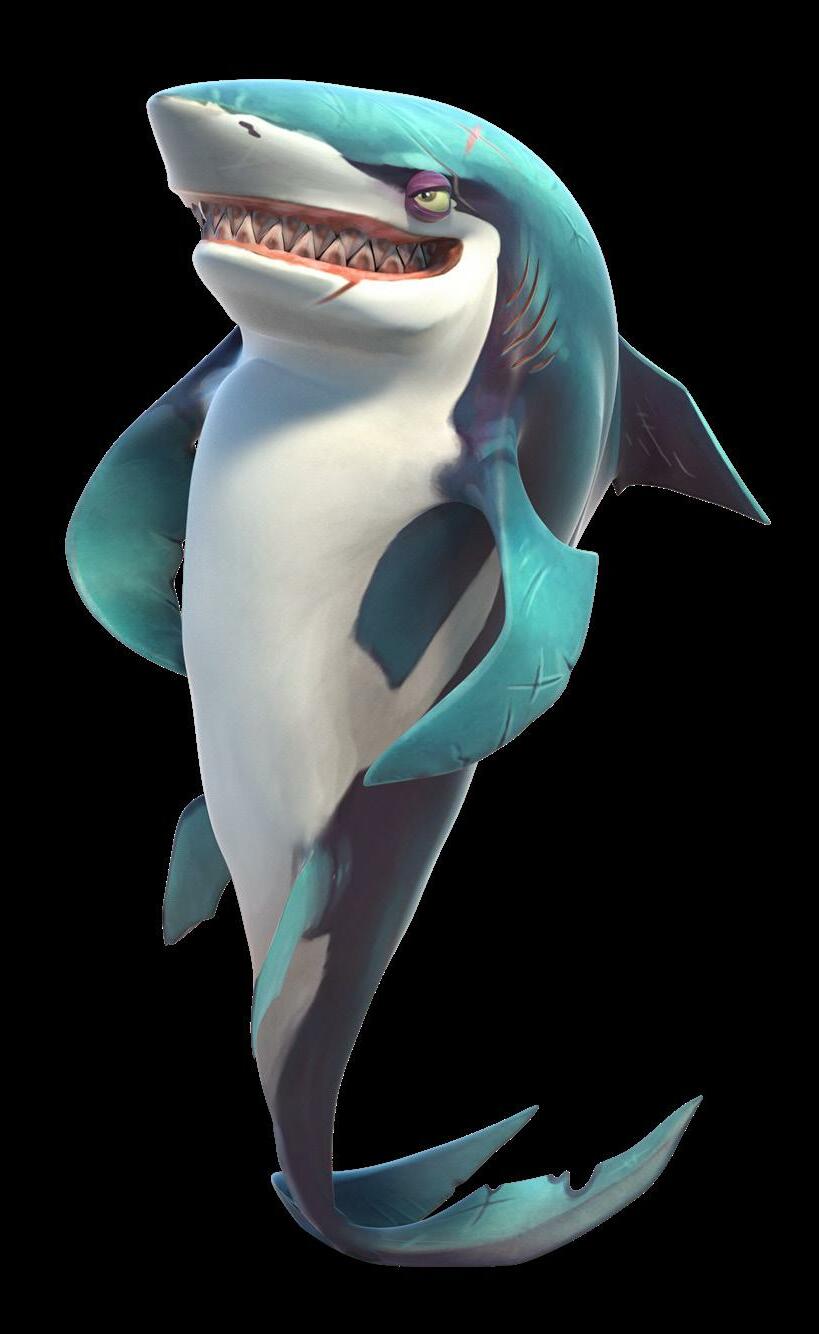
Q: Are any conservation messages incorporated into gameplay?
A: There are a couple of messages within our games; they are part of the experience for us. Not only to further support the relationship with our partners, but because we aim to showcase — in our own playful way — the world out there. Unfortunately, shark finners, plastic waste pollution, fishing nets and debris are all part of the reality for our oceans. We have added gadgets, missions, events and messages to highlight such issues to the players in a seamless way. We hope these stay with them even outside of the game.
Q: What’s next for the Hungry Shark series?
A: I don’t even know where to begin! This year will see a lot of news about Hungry Shark as a brand swimming to new oceans. I am afraid I can’t share any details at this time. One does involve our next campaigns with Oceana, however. Stay tuned for more!
SPRING 2019 | Oceana.org11
Ocean Vanguards

12
How Chile climbed to the forefront of marine conservation
Santiago’s cheerfully chaotic fish market, Mercado Central, doesn’t seem like it might hide any secrets darker than a pastprime fish or two. Vendors lure potential customers by calling out compliments. Families cram into shoe-box-sized eateries, downing bowls of cheesy crab soup and cusk eel stew, Chile’s de facto national seafood dish.

But here, as elsewhere in Chile, diners have no way of knowing if that fried hake or grilled swordfish was illegally caught. Murky supply chains often mean that laundered fish gets mixed in with the legal stuff, enriching criminals while hurting honest fishers and consumers. Illegal fishing is in part to blame for the sorry state of many Chilean fisheries, 60 percent of which are overexploited or collapsed.
A sweeping law passed in January aims to tackle this crisis. The law, which propels Chile’s fisheries agency into the modern era, is part of a years-long push from the government, scientists and ocean advocates like Oceana to protect and restore the country’s vibrant seascapes. These efforts, along with the recent creation of a spate of huge marine parks, have positioned Chile as a global leader in marine conservation.
SPRING 2019 | Oceana.org13
Santiago’s famous Mercado Central fish market is a national hub for seafood in Chile.
Modern fishing
As Chile’s fisheries have changed dramatically in the last few decades, the country’s fisheries laws have struggled to keep pace, and efforts to update these laws haven’t always worked out as planned.
In 2013, for example, Chile implemented dramatic, country-wide cuts to fishing quotas. The sudden reductions, coupled with weak enforcement and low fines, offered an incentive to fish illegally that many fishers found hard to resist, said Liesbeth van der Meer, the head of Oceana in Chile. Common hake, for example, has failed to recover from a mid-2000s crash largely due to illegal fishing, much of it from the artisanal fleet.
Illegal fishers, whether artisanal or industrial, are supported by a country-wide network of shady seafood processors, transporters, wholesalers and other middlemen. It’s here where the big bucks from illegal seafood are made, as fishers usually see little of the retail value of their catch.
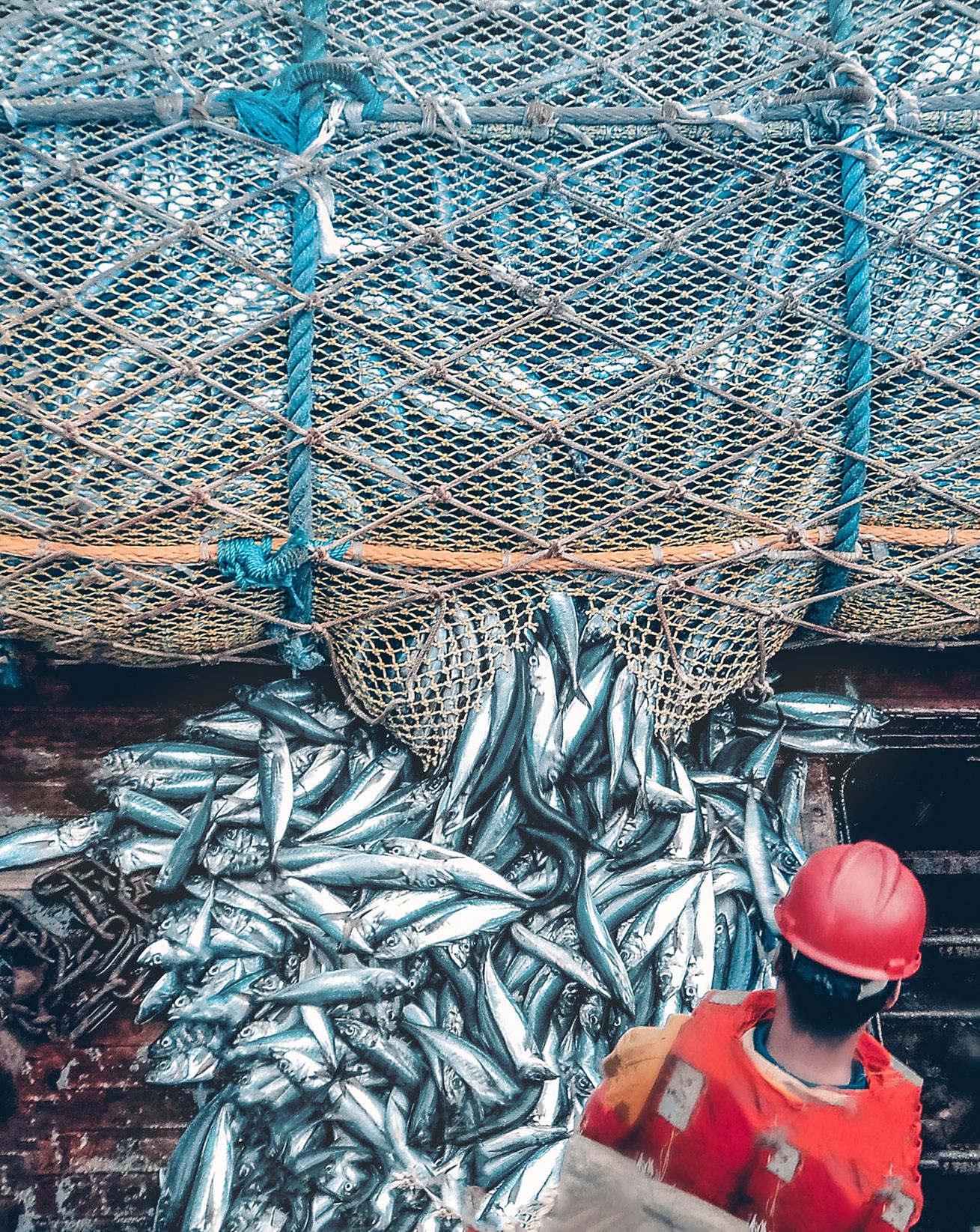
These criminal middlemen are a major target of a new bill that modernizes the National Fisheries and Aquaculture Service, or Sernapesca, equipping the agency with the tools to go after bad actors in all links in the supply chain. An expanded budget will allow Sernapesca to add 250 new members to its 1,000-person staff, dramatically boosting its ability to monitor fish landings and enforce quotas — activities that had before been handled by a private company.
“Providing Sernapesca with appropriate tools to combat illegal, unregulated and unreported fishing is essential for fisheries recovery in Chile,” said van der Meer.
14
Ocean Vanguards
Chile’s jack mackerel are recovering from overfishing.
© Shutterstock/AlenaLitvin
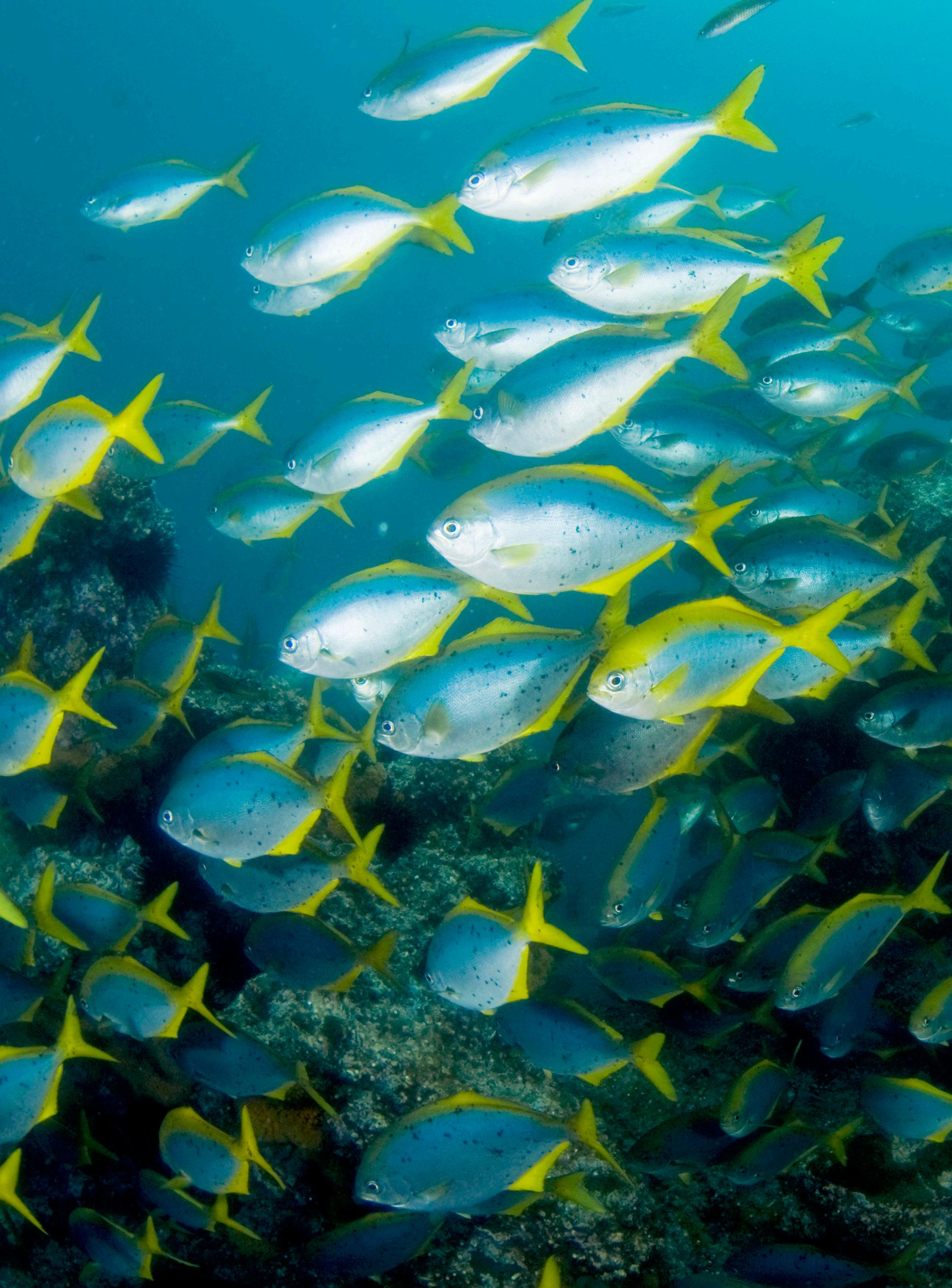
SPRING 2019 | Oceana.org15 Ocean Vanguards
The Chilean sea chub is endemic to the Juan Fernández and Desventuradas islands.
© Oceana/Eduardo Sorensen
Eyes in the sky
Oceana has been pushing the government to update Chile’s fisheries laws for years. The group organized meetings and seminars with regulators, scientists and other decision-makers, and “in every single event, we stated the need to modernize Sernapesca as a key element to fight illegal fishing,” van der Meer said. Her team also published a series of reports making the same argument.
Oceana successfully introduced a key aspect of the law, which requires the government to make vessel monitoring system (VMS) data publicly available. VMS is a satellite tracking system that records boats’ location and speed. It’s mainly used to prevent ship collisions, but it can also be used to enforce the boundaries of marine reserves, and apprehend vessels fishing w here or when they’re not permitted.
“This is a crucial tool that will allow us to know if vessels are operating in protected areas or fishing illegally,” van der Meer said. Implementation of the new rule will take time, she added, but eventually public VMS data will help scientists and nonprofits better safeguard Chile’s national waters and marine reserves.”
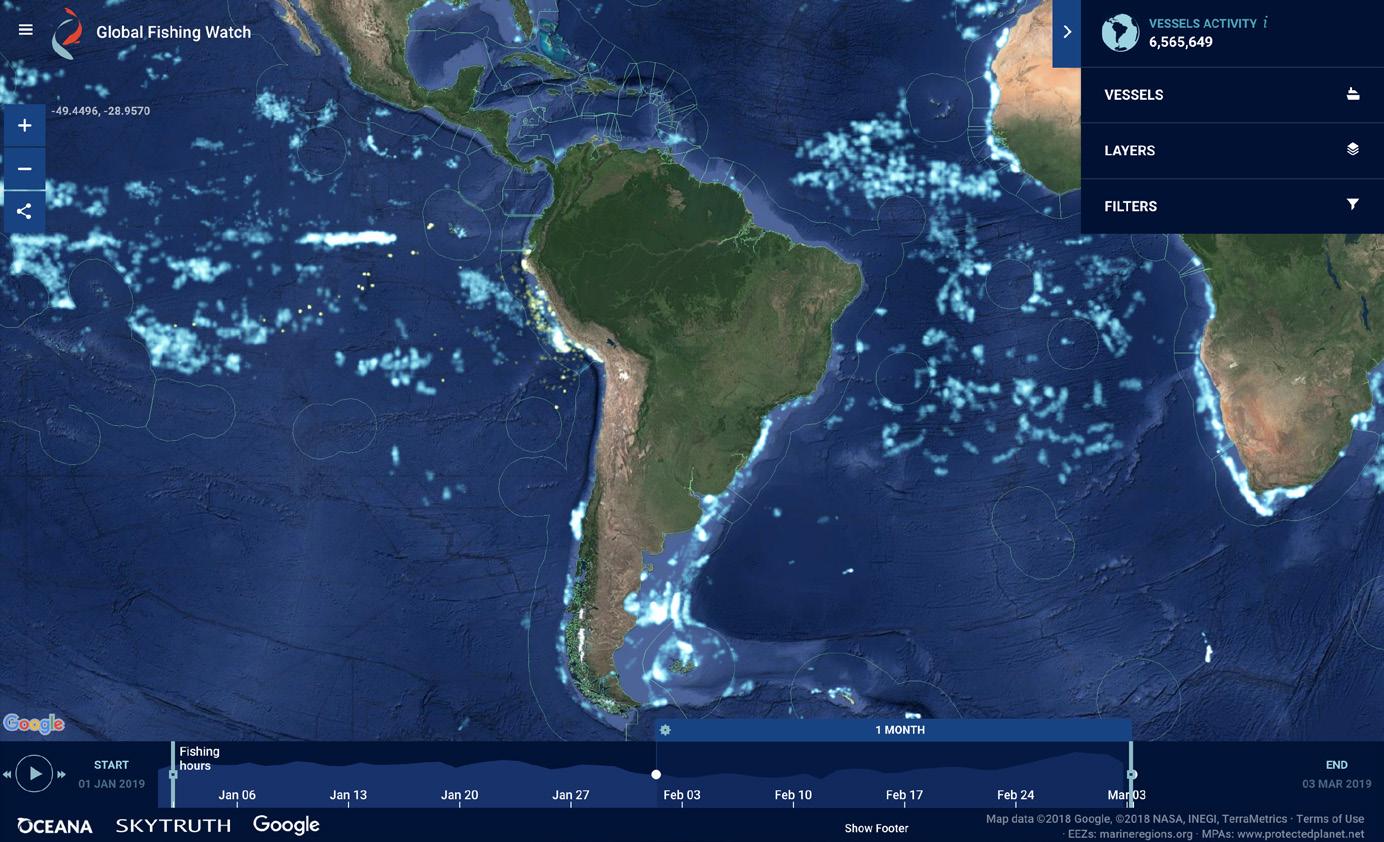
Surf and protect
Effective enforcement of protected area regulations is especially important in Chile — the country has some of the biggest marine reserves in the Americas, several of them centered around islands located hundreds of kilometers offshore. Overall, 26 percent of the country’s marine territory is protected as no-take zones, up from 0.1 percent in 2008.
Oceana has played a major role in this swift growth. Since 2009, Oceana expeditions, scientific expertise and organizing capacity have directly led to the creation of several major marine reserves: the 150,000-square-kilometer Motu Motiro Hiva Marine Park around the Salas y Gómez Islands in 2010, the 300,000 square-kilometer Nazca-Desventuradas Marine Park in 2015, and the 262,000-squarekilometer Juan Fernández Islands Marine Park in 2016. In addition to these, Oceana advocacy also spurred the government to announce a ban on destructive bottom trawling in 98 percent of Chile’s national waters.
16
“Providing Sernapesca with appropriate tools to combat illegal, unregulated and unreported fishing is essential for fisheries recovery in Chile,” said van der Meer.
Ocean Vanguards
A map of global fishing hot spots
2010
Oceana advocacy has helped create several major marine protected areas in Chile:
Motu Motiro Hiva
Marine Park 150,000 square kilometers
Nazca-Desventuradas Marine Park 300,000 square kilometers
Juan Fernández Islands
Marine Park 262,000 square kilometers
Caleta Tortel Coastal Marine Protected Area 6,702 square kilometers
Community collaboration has been a cornerstone of these successes, van der Meer said. In Caleta Tortel, a small town set among the stunning landscapes of Chilean Patagonia, Oceana’s decade-long partnership with residents led first to a 2015 ban on industrial salmon farms — which would have polluted the region’s pristine, glacier-fed waters — followed by the declaration of a 6,702-square-kilometer marine reserve in 2017.
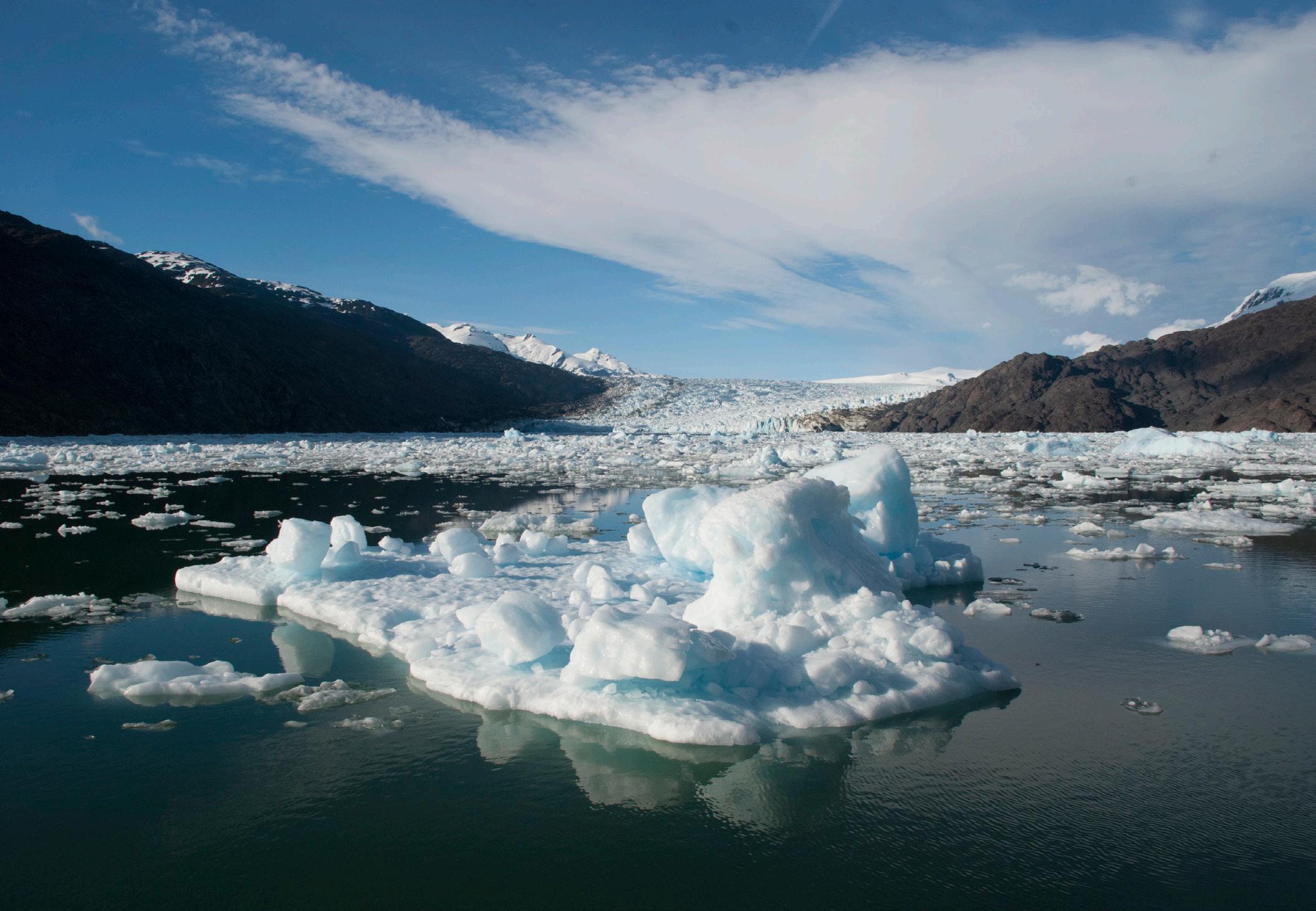
Chile’s oceans still face plenty of problems. Of the country’s 43 fisheries, over half are struggling, with nine depleted or collapsed. Pollution from plastic, mines and the salmon industry poisons habitats and kills fish and marine mammals.
Oceana and its allies, however, are showing that big successes are possible despite the odds. In the next two years, Oceana aims to protect Katalalixar, in Patagonia, and La Higuera, on Chile’s northern coast, and will implement and enforce science-based management for anchovies, sardines and brown kelp. The team is also planning a scientific expedition to the little-studied region of Pisagua, in Chile’s far north.
Someday, with the right science, regulations and enforcement, all of the ice-nestled seafood in Mercado Central could be guaranteed legally caught, sustainable, and fully traceable from boat to plate. As for the cilantro-flecked cusk eel soup, the only secret it will have to hide is where it gets that addictive flavor.
SPRING 2019 | Oceana.org17
2015 2016
Ocean Vanguards 2017
Caleta Tortel, in Chilean Patagonia, is nestled between two of the world’s largest non-polar ice fields.
© Oceana
In the Philippines,
Oceana Victories Empower Fisherfolk
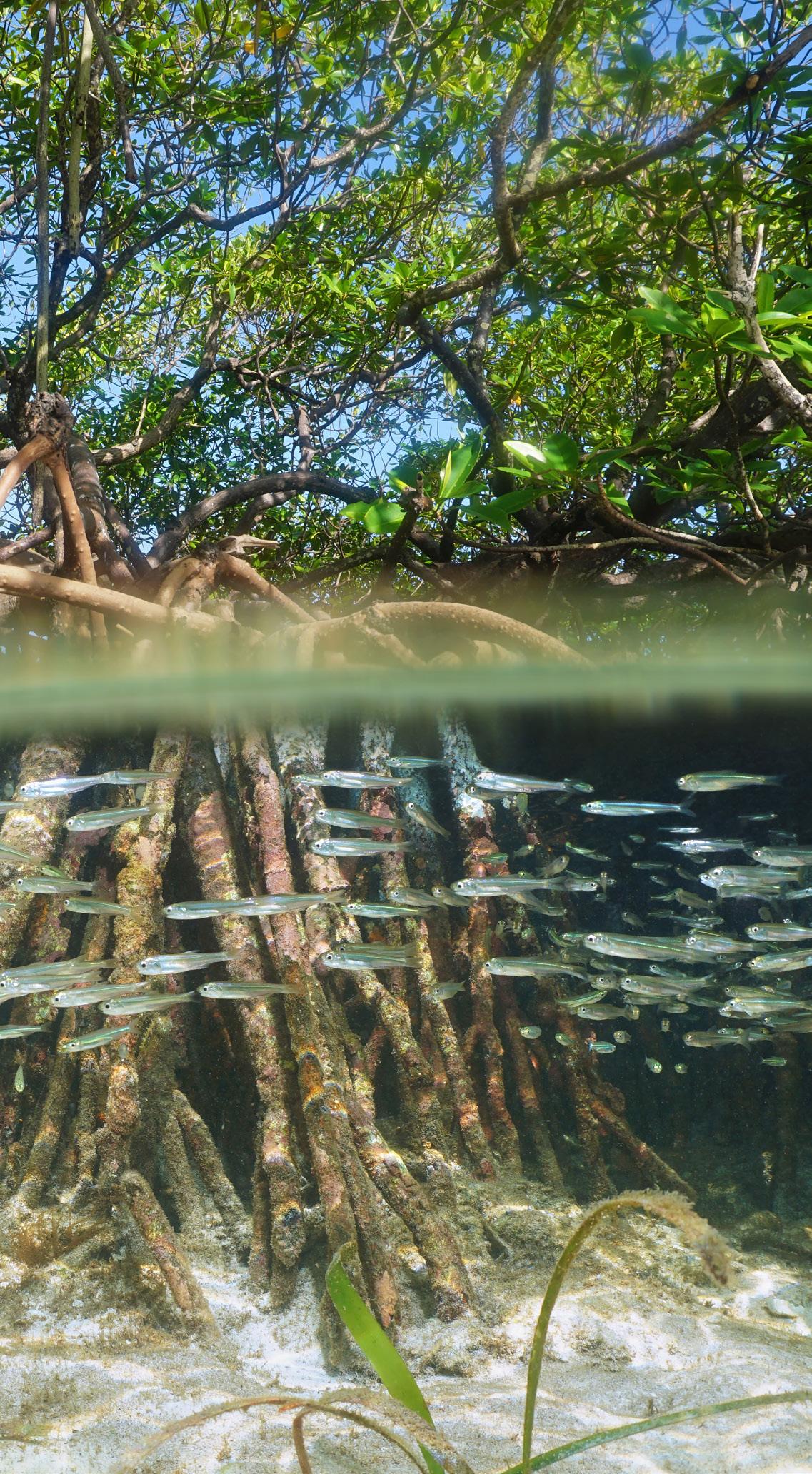
If you’re looking for missing fish, Veda Raunillo is the one to ask. She grew up on the shores of Tañon Strait, a narrow strip of ocean between the islands of Negros and Cebu in the central Philippines. In the early 2000s, a group of kids in her hometown, Guihulngan, asked her about the absence of rabbitfish, mudskippers, and other reef and mangrove fish — creatures they’d heard about, but almost never saw.
That question got Raunillo to wondering, too. A trove of once-common species she remembered from years before had all but vanished. And the disappearances weren’t the only changes she noticed. Fishermen in her family, who could once earn all they needed from the sea, now had to find extra sources of income to stay afloat.
As it became clear that overfishing was to blame, Raunillo decided to take action. She got deputized as a volunteer fish warden, tasked with protecting local waters from illegal fishers and other lawbreakers. She later become the director of a regional fisherfolk association, where she has spearheaded mangrove restoration efforts, and helped fishermen secure funding to better manage their fisheries.
Raunillo isn’t the only Tañon resident finding power in protecting the ocean. Across the region, fisherfolk and their advocates are banding together to safeguard their waters with the help of government agencies, Oceana and other environmental groups. After just a few years, some fishermen report that fish are returning to their nets, early indications that enforcement is working.
18
Mangroves are vital nurseries for juvenile fish © Shutterstock/Damsea
Strait, some local fishermen have seen their catches double after a ban on illegal commercial fishing was enforced.
Strait and narrow
Tañon Strait is fringed with mangroves, seagrasses and nearly 200 square kilometers of tropical reef, and is home to hundreds of species of fish, coral and crustaceans. Fourteen whale and dolphin species live in Tañon or migrate through it. Its waters provide food and income for tens of thousands of fisherfolk families, many of them the “poorest of the poor,” said Gloria Ramos, an environmental lawyer and the head of Oceana in the Philippines.
Tañon is one of the largest protected seascapes in the Philippines, but for much of its two-decade existence it was a “paper park,” Ramos said. Weak or nonexistent law enforcement allowed a panoply of threats to flourish: pollution, overdevelopment, and habitat-killers like dynamite fishing, cyanide fishing and bottom trawling.
Of these threats, the chief concern for Tañon’s fisherfolk was rampant commercial fishing. In the Philippines, commercial fishing is illegal within 15 kilometers of the shore. These so-called “municipal waters” are only open to artisanal
and subsistence fishers. No point in Tañon is more than 15 kilometers from the coast — in other words, it’s all municipal water — and it’s also a protected area, making commercial fishing wholly illegal. Yet for years large commercial boats had been vacuuming up fish with impunity, locking poor fisherfolk in competition with vessels often owned by campaign contributors to local politicians and other wealthy, powerful business and political interests.
This problem isn’t restricted to Tañon Strait. Overall, illegal and destructive fishing costs the Philippines an estimated $850 million a year, Ramos said, a significant sum in a country with an average annual per-family income of just over $5,000. These practices endanger ecosystems and entrench poverty for the country’s estimated 1.8 million small-scale fishers. Fish catches have declined 13 percent in the last decade, and 10 out of the 13 major fishing grounds are overfished. For these reasons, fighting illegal fishing is one of Oceana’s top priorities in the Philippines.
$800 million
in illegal and desctructive fishing costs a year
1.8 million
small-scale fishers live in the Philippines
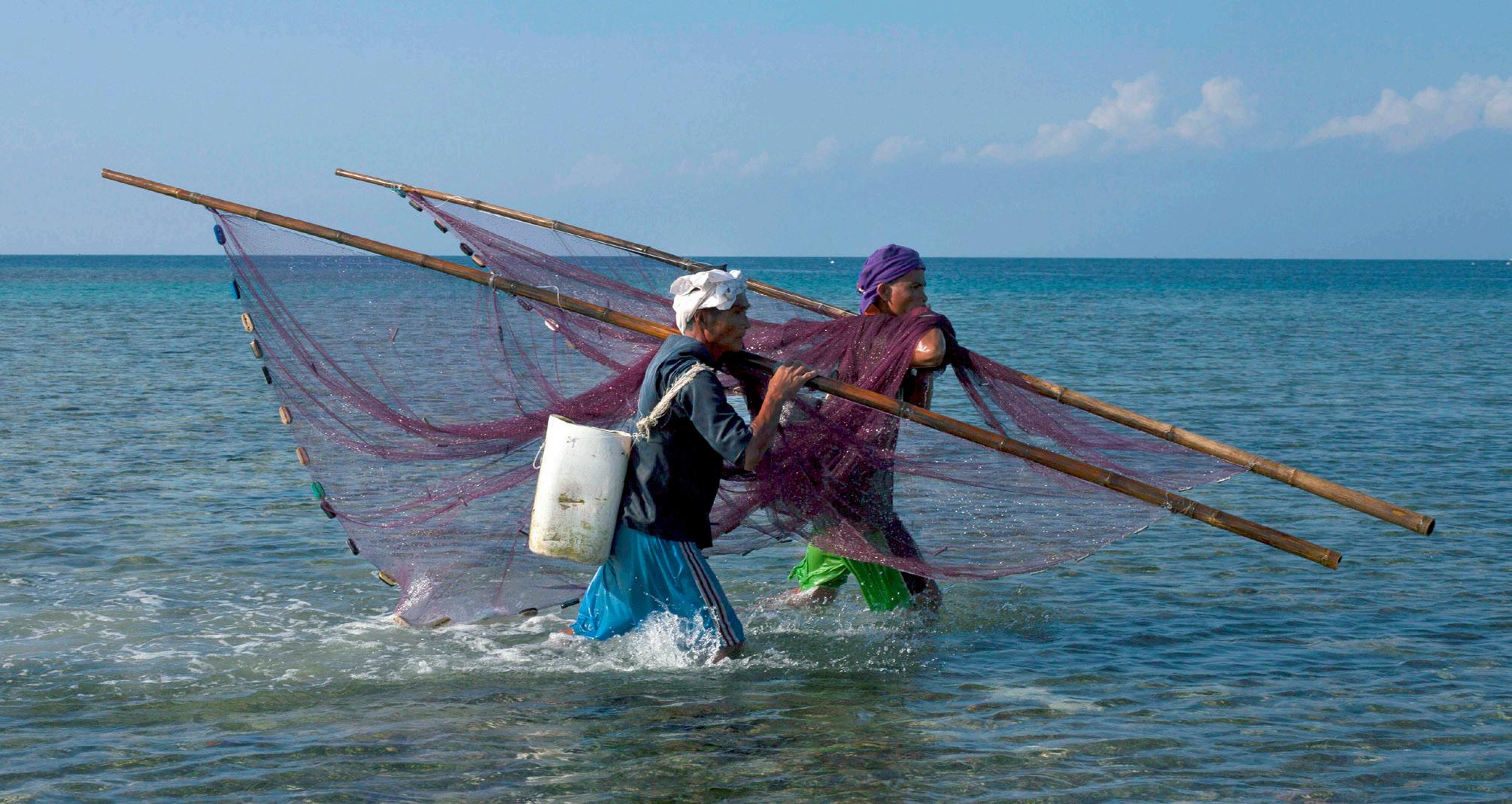
In the last decade, fish catches have declined 13% 10/13
major fishing grounds in the Philippines are overfished
SPRING 2019 | Oceana.org19 Oceana victories empower fisherfolk
In Tañon
© Oceana/Jenn Hueting
In Tañon, little fish feed both people and wildlife.
Oceana victories in the Philippines include:
Protecting 50,000 hectares of Benham Bank’s coral reefs as a notake zone, and a further 300,000 as a Fisheries Management Area that bans bottom trawling
Enforcing a ban on bottom trawling in all municipal waters, an area encompassing 226,000 square kilometers — approximately the size of Ghana
Increasing Tañon Strait patrols from zero to over 75, along with 18 arrests and 13 cases filed for illegal fishing
Sleeping giants
In 2015, Oceana kicked off its illegal fishing campaign by working with the Department of Environment and Natural Resources, the Cebu provincial government and nongovernmental organizations to convene the first-ever meeting of the 350-member Tañon Strait Protected Area Management Board. Due to the board’s sheer size and members’ conflicting interpretations of the law, the group had never met, leaving the strait essentially unmanaged. At the meeting, officials agreed to approve an updated management plan for the strait.

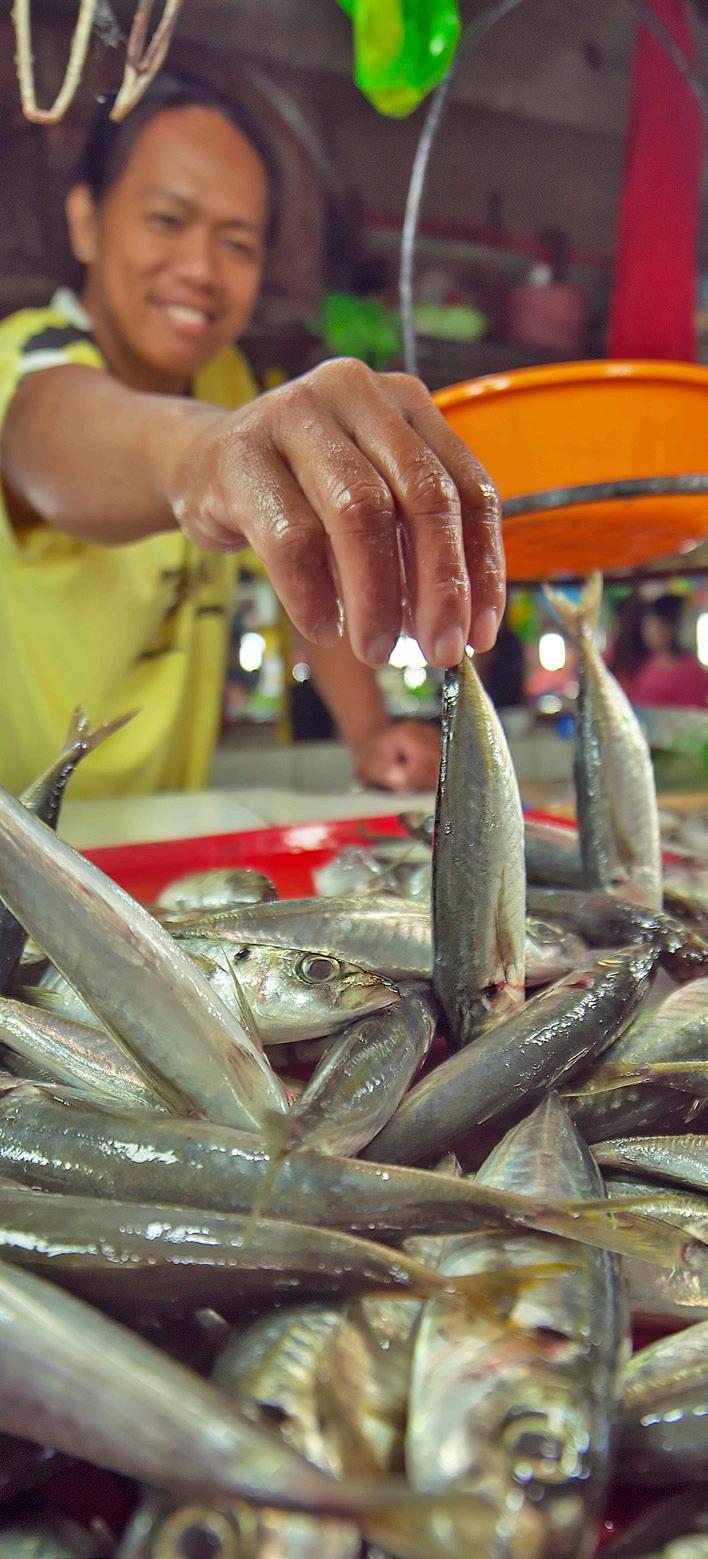
Following the launch of the management plan came four years of enforcement efforts, a strengthening of the regional Coastal Law Enforcement Alliance, apprehensions, legal cases and media campaigns that involved groups ranging from the Philippine navy to the Catholic church. After Oceana strengthened its links with the Department of the Interior and Local Government, this agency proved an active ally, drumming up support from national agencies, local authorities and other officials. “It’s been an amazing governance transformation, with the agency spearheading the issuance of policy guidelines for regulation and monitoring of fishery activities in municipal waters nationwide,” Ramos said.
Oceana also partnered with fisherfolk associations, helping thousands of fishermen and their supporters realize their dormant political strength. Oceana fostered a relationship between these groups and law enforcement agencies, including the navy and coast guard, which boosted the fisher’s confidence in reporting violations. “At times they join their ‘big brothers’ in field operations, resulting in apprehension of commercial fishing vessels and arrests of dynamite fishers,” said Marlito Guidote, Oceana’s director of external government relations in the Philippines.
Many fisherfolk are feeling a new sense of influence, said Venerando Carbon, who in November was elected as the first president of the new Tañon Strait Fisherfolk Federation. The federation was formed after fisherfolk noticed they were underrepresented on the strait’s management board. “Fishermen realized the importance of being part of the protection of Tañon Strait,” he said. He added that Oceana played a key role in this change: “Fishermen really feel we have a shoulder to lean on.”
20 Oceana victories empower fisherfolk
© Oceana/Ferdz Decena
© istock
Lawmakers and lawbreakers
Oceana also advocated for a suite of enforcement strategies in Tañon, chief among them pushing for a policy requiring the tracking of every commercial fishing vessel transiting or docked in Tañon via a vessel monitoring system, or VMS. VMS is an inexpensive technology that transmits information like a vessel’s speed and location directly to a computer or phone, making it much harder for a ship to hide illegal activity at sea. This has yet to be implemented by the Protected Area Management Office, despite strong support from local mayors, Ramos noted.
In 2016, a crisis cast the need for monitoring into sharp relief. In June, fishermen spotted oil clinging to seagrass in Moalboal, Cebu, an area famed among scuba divers for its healthy corals and dense, mesmerizing schools of sardines. It was thought that a commercial vessel was responsible for the spill, but without vessel monitoring, there was no way to identify the culprit.
That year, an Oceana pilot project equipped 15 boats in Tañon and other nearby areas with vessel monitoring systems, a number that jumped to 40 by the end of 2018. Per a 2015 law, all commercial fishing boats need to be outfitted with monitoring devices.
Oceana also spurred the government to appoint a task force of special prosecutors to pursue environmental violations in protected areas. In 2017, the Department of Justice appointed a special prosecutor specifically for Tañon Strait, who soon after oversaw a landmark case against 13 fishermen accused of illegal fishing.
Though the increased patrols and prosecutions are popular with many Tañon residents, they do have their opponents. Some politicians either own or visibly support operators of commercial vessels that fish in the strait, a fact that small-scale fishers cite as a major frustration.
Traditionally, these politicians and commercial fishers have operated with little fear of legal repercussions. But increased willingness to publicly go after violators means that it’s getting harder to break the law with impunity.
When a city home to commercial fishing interests introduced and passed an ordinance to allow commercial fishing in Tañon Strait, Oceana and its allies stood against the ordinance for being illegal and highly destructive. It was subsequently thrown out by the Cebu provincial government. “The perception is that we won’t hesitate to hold public officials accountable,” Ramos said. “When we speak, they know we’re serious.”
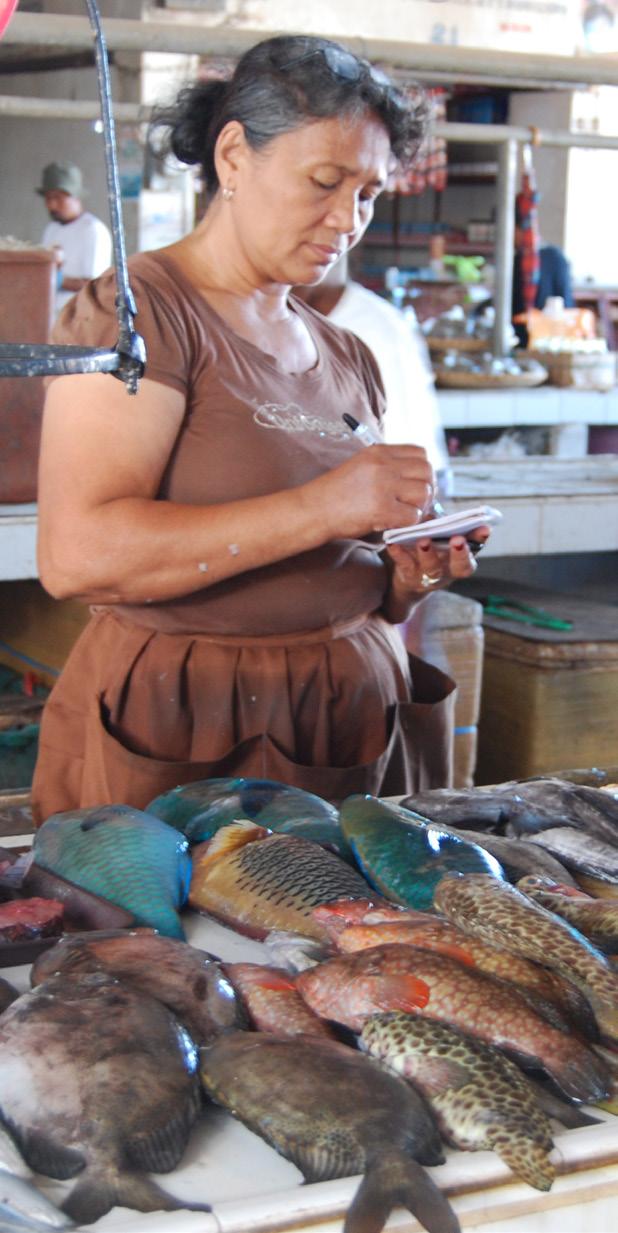

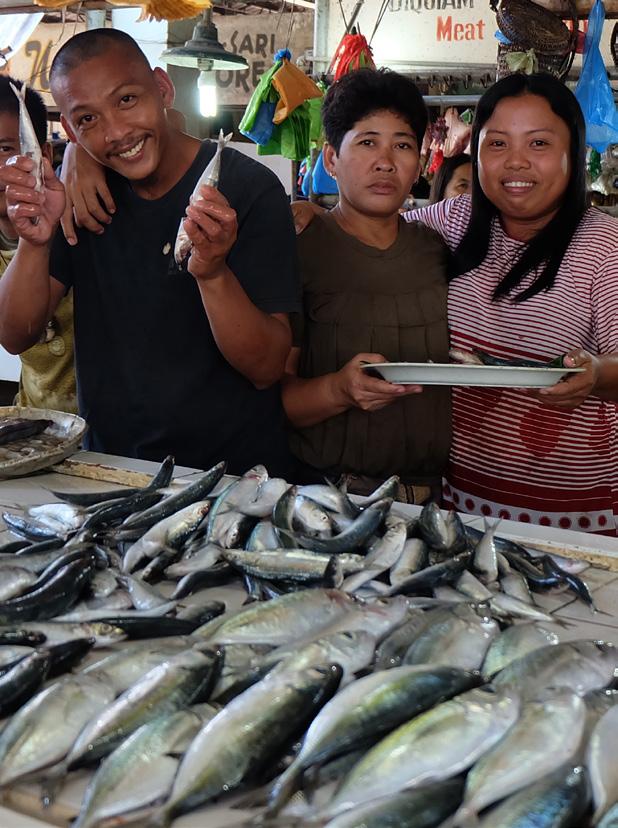
SPRING 2019 | Oceana.org21
victories empower fisherfolk
Oceana
Once beset by dynamite fishing, a local ecotourism initiative has transformed Cebu’s Aloguinsan River.
© Oceana/Silvia García
© Oceana/EdwinCastillon
Ocean heroes
In Tañon, years of enforcement are paying off: illegal commercial fishing is drying up, along with dynamite fishing, mangrove clearing and bottom trawling. As these threats recede, Tañon and its fish may be staging a recovery.

Carbon, for example, has seen catches in his home of Barili double from 2 kilos per day to 4 or 5 in just the last year. And Norlan Pagal, a fisherman left paralyzed by an illegal fisher’s bullet, now texts Ramos photos from his village of boats laden with fish. Fishermen are earning nearly as much in a day as they used to make in a month, he told Ramos. At this rate, families will be able to send their children to college.
“What’s happening in Tañon is alleviating poverty,” Ramos said. And it’s been a cost-effective strategy.
At Oceana’s 2017 Ocean Heroes awards, a mayor of a town on Negros island reported that every dollar invested in local fisheries management and law enforcement had yielded 30 times that in boosted fish catch.
Ramos is confident that Tañon’s lessons can be applied on a national scale. Her team plans to use tactics like vessel monitoring and fisherfolk empowerment to kick illegal fishers out of municipal waters nationwide.
As for Raunillo, she has good news to report too. She runs a women’s cooperative that weaves bags and baskets from local plants, helping wean locals off the single-use plastics that are major pollutants in Tañon. And as for those missing reef and mangrove fish that her town’s children once wondered about? “Now I see more,” she said. “Slowly, slowly, they are returning.”
22
Oceana victories empower fisherfolk
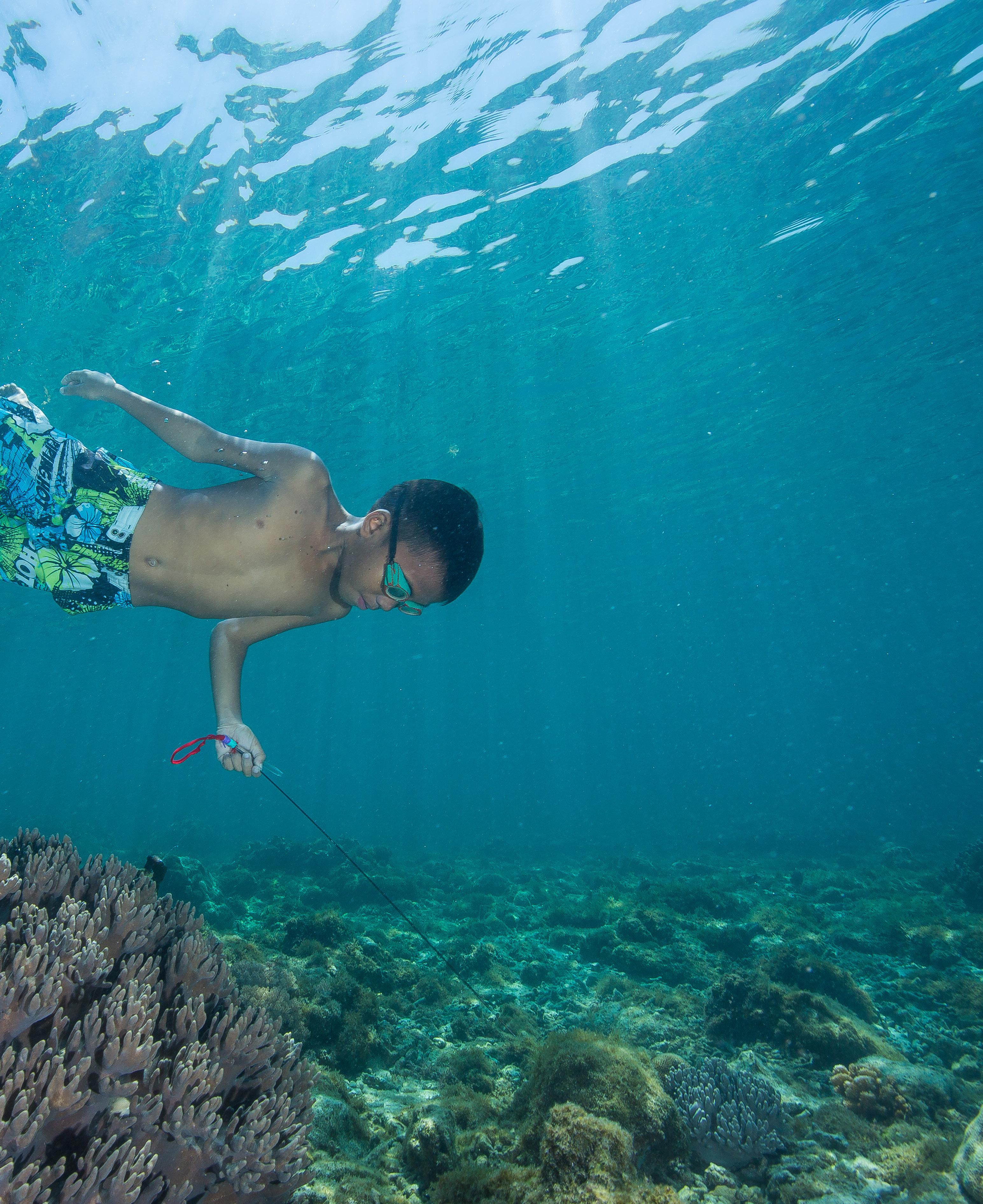
SPRING 2019 | Oceana.org23
Oceana victories empower fisherfolk
The Philippines is home to an estimated 1.8 million small-scale fishers — some of whom get an early start practicing their trade.
© Oceana/SteveDeNeef
2018-2019 Victories
2019 | February
• Spanish government creates the second-largest marine national park in the Mediterranean
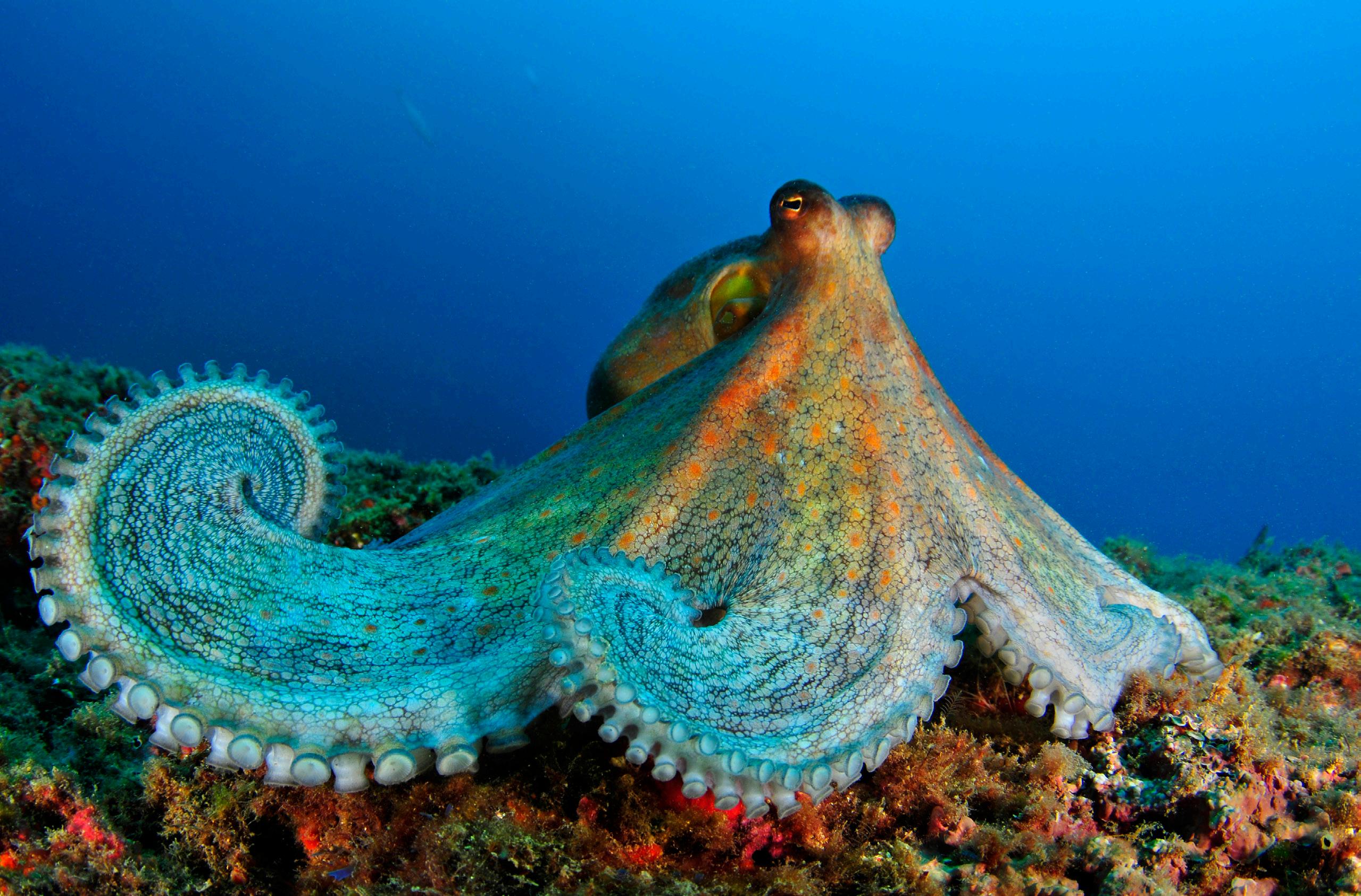
January
• Chilean Senate updates the National Fisheries Service and passes law to increase transparency and accountability, fighting back against overexploited and collapsed fisheries
2018 | December
• The Philippines ends bottom trawling in all municipal waters, protects 276,000 square kilometers of key habitat and ocean nurseries
• Peru passes law to reduce use of plastics including ban of plastic bags and use of plastics in protected areas
October
• California phases out destructive swordfish drift gillnet fishing, protecting marine mammals, turtles and sharks from bycatch
September
• Brazil bans destructive bottom trawling in waters of Rio Grande do Sul, an area that accounts for 15% of all landings in Brazil and is home to 30 percent of red listed endangered species.
June

• Malta expands habitat protections in the Mediterranean and protects 35 percent of its waters.
May
• Brazil introduces first-ever management rules for tainha, begins science-based management of fisheries
• Philippines creates Philippine Rise protected area and protects 300,000 hectares as a no-take zone to safeguard unique habitat, corals and more
April
• More than 140,000 square miles of fragile seafloor habitats protected from destructive bottom trawling off U.S. Pacific coast
February
• Chile announces protected area in Tortel to preserve pristine habitat
• Chile protects Juan Fernández Islands and wildlife found nowhere else on Earth
January
• Belize bans offshore oil drilling, protecting the largest barrier reef in the Americas
24
© Oceana/Carlos Minguell
Supporter Spotlight
Bloomberg Philanthropies Launches Vibrant Oceans Initiative II
At Oceana, we are on track to save the oceans and feed the world in no small part because of the vision, determination and generosity of Bloomberg Philanthropies and its benefactor, Michael Bloomberg. In 2014, Oceana became part of their Vibrant Oceans Initiative (VOI), which was launched with an initial commitment of $53 million to protect marine ecosystems in three major ocean countries: Brazil, Chile and the Philippines.
In October 2018, Bloomberg Philanthropies announced Phase II of Vibrant Oceans, making an $86 million investment to expand work into 10 target countries: Australia, the Bahamas, Chile, Fiji, French Polynesia, Indonesia, the Philippines, Tanzania, Peru and the United States. Bloomberg selected these countries because they are home to priority coral geographies, are top fishing nations, or are countries where fish is a major food source — or all three.
Launched in 2014 at Bloomberg Philanthropies, the Vibrant Oceans Initiative has supported Oceana and other partners, including Rare, in reforming both local and industrial fishing practices and protecting critical marine areas in the top fishing nations of Brazil, Chile and the Philippines, where partners have seen a 390 percent growth in coastal fish populations at Phase I sites, and where more than 1 million square miles have been protected. The victories, featured elsewhere in this magazine, are directly related to Bloomberg Philanthropies Vibrant Oceans Initiative project.
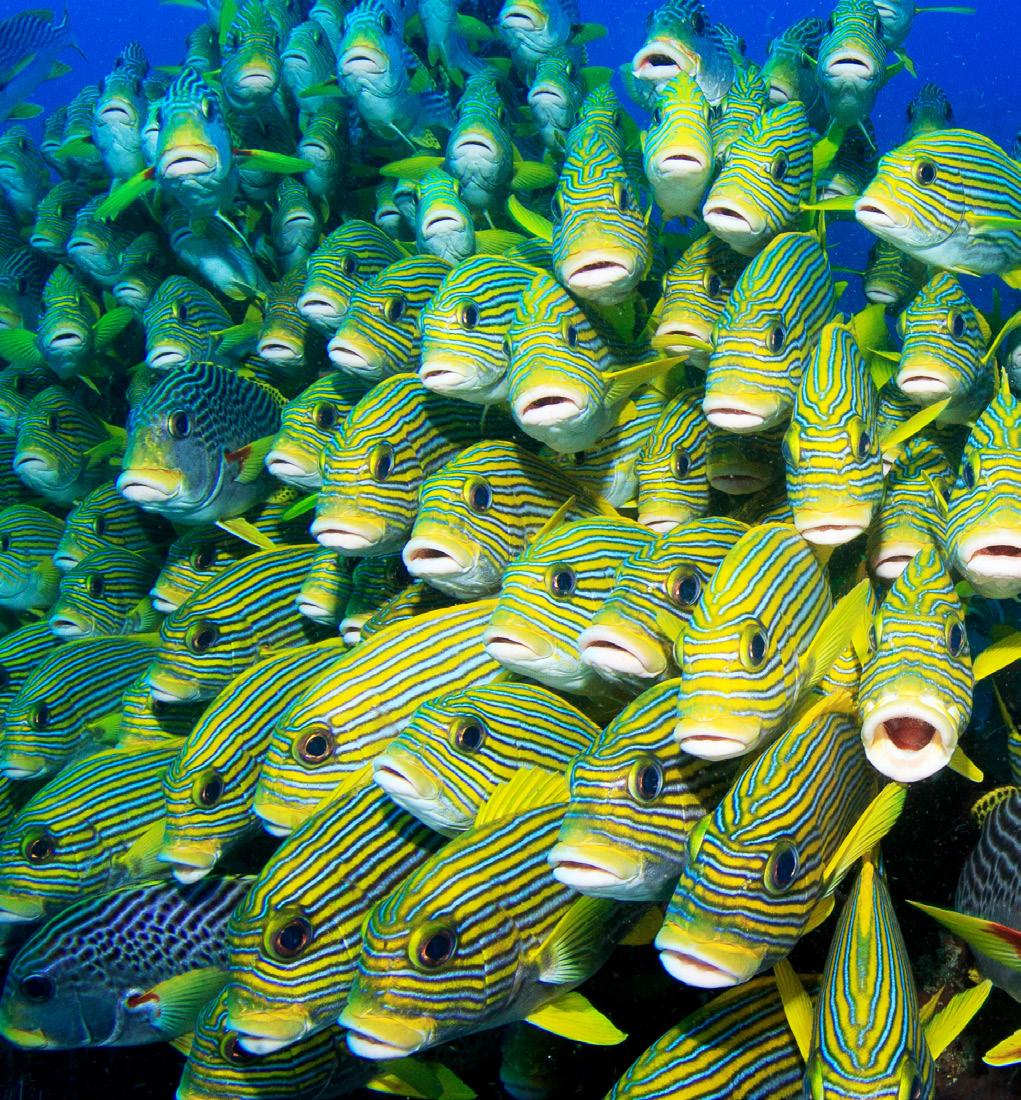
“More than 3 billion people depend on the oceans for food and their livelihoods. That means threats to marine ecosystems — like climate change and overfishing — also threaten lives around the world,” said Michael R. Bloomberg, Bloomberg Philanthropies founder and former New York City mayor.
As climate change, overfishing, and coastal pollution continue to threaten the health and food security of the more than 1 billion people who depend on fish for protein, the expansion of Bloomberg’s Vibrant Oceans Initiative is taking a science-based approach to ensure the survival of marine habitat, specifically coral reefs, combat declining fish populations and reduce sources of pollution. Focusing on key coral geographies and top fishing nations, over the next four years Bloomberg will support data-driven strategies in fisheries management, coral conservation and pollution
reduction in its 10 priority countries. The initiative will also promote global action with government leaders, the private sector and key NGO partners.
“As we deal with the impacts of climate change, the ocean is an ever more critical resource, providing sustenance and livelihood for billions of people. We must protect it. The Vibrant Oceans Initiative — through its support of Oceana and other partners — has helped to win important policy victories in Chile and the Philippines. We will build on this success with Vibrant Oceans II in countries like Peru and the United States, ensuring our oceans are truly healthy and vibrant,” said Antha Williams, the head of Bloomberg Philanthropies Environment Program.
The Vibrant Oceans Initiative’s goal is to ensure that critical ocean ecosystems — and the billions of people who depend on them — survive and thrive in the face of advancing climate change. The initial Vibrant Oceans partners for the next phase include Rare, Oceana, Global Fishing Watch, Wildlife Conservation Society, Oceans 5, and the Commonwealth Secretariat. Other partners will be announced over the coming months.
SPRING 2019 | Oceana.org25
Sweetlips are a common fish on coral reefs
© Shutterstock/SergeUWPhoto
“As we deal with the impacts of climate change, the ocean is an ever more critical resource. We must protect it. The Vibrant Oceans Initiative through its support of Oceana and other partners has helped to win important policy victories in Chile and the Philippines. We will build on this success with Vibrant Oceans II.”

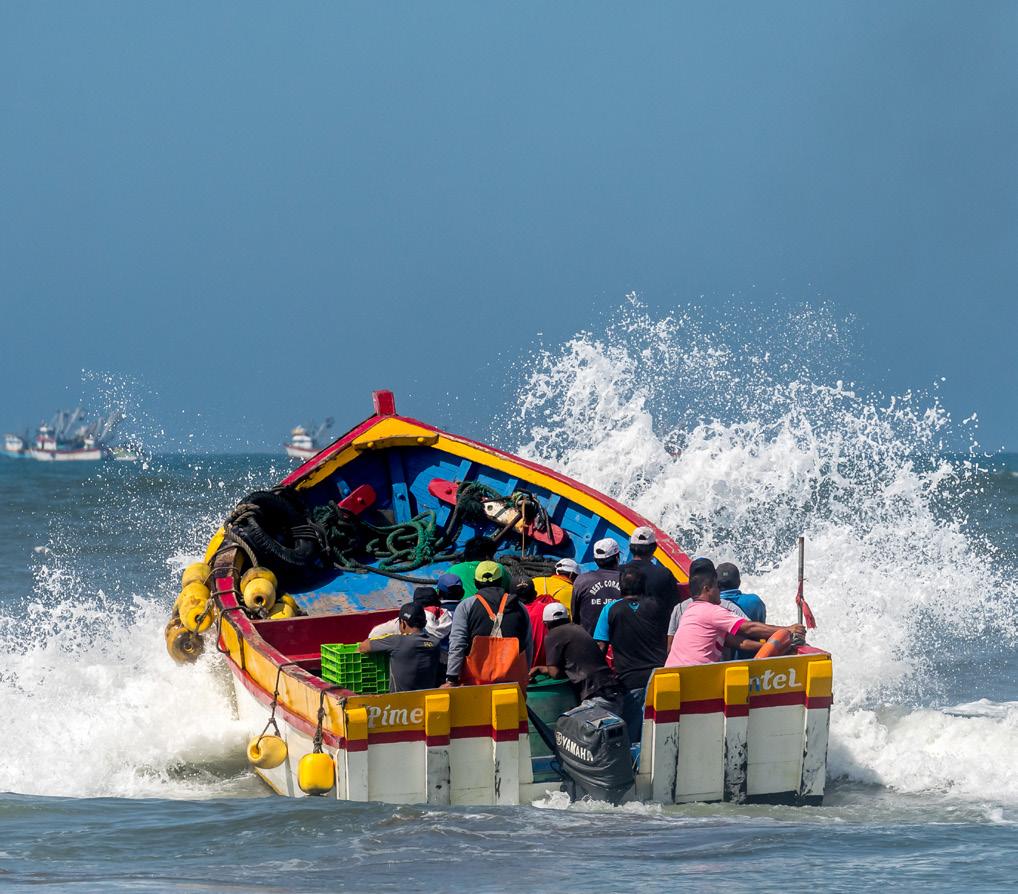
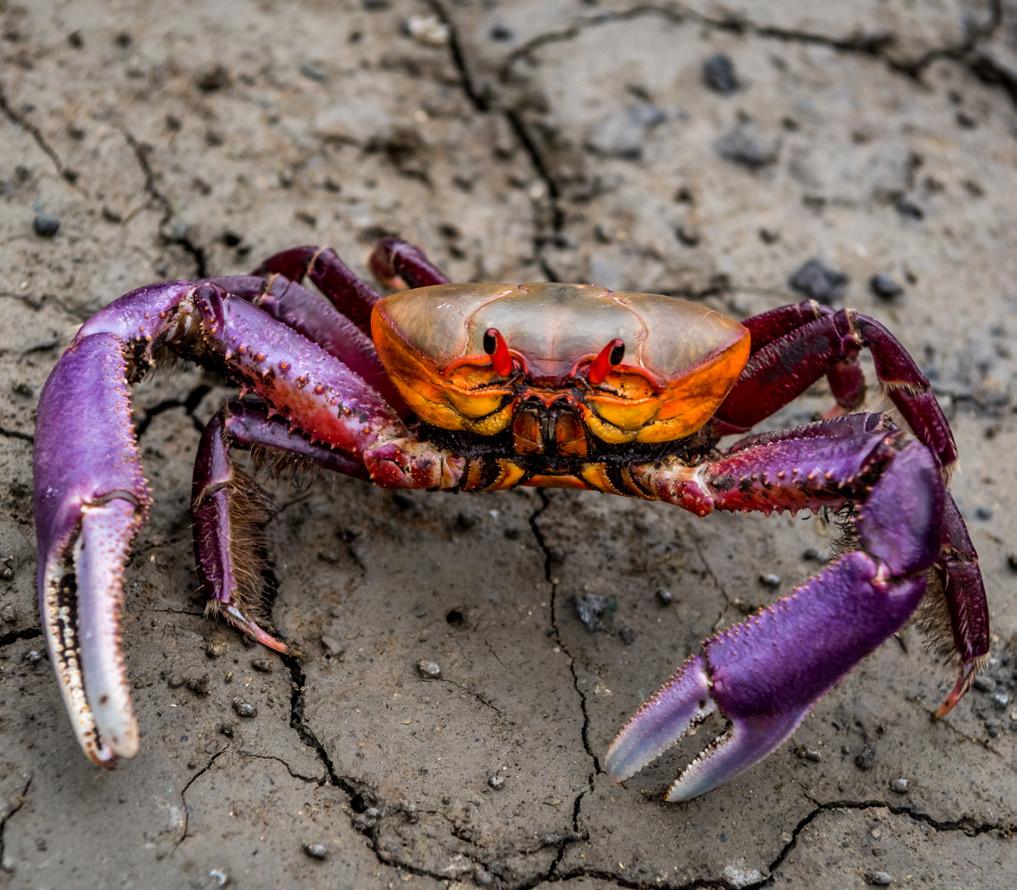
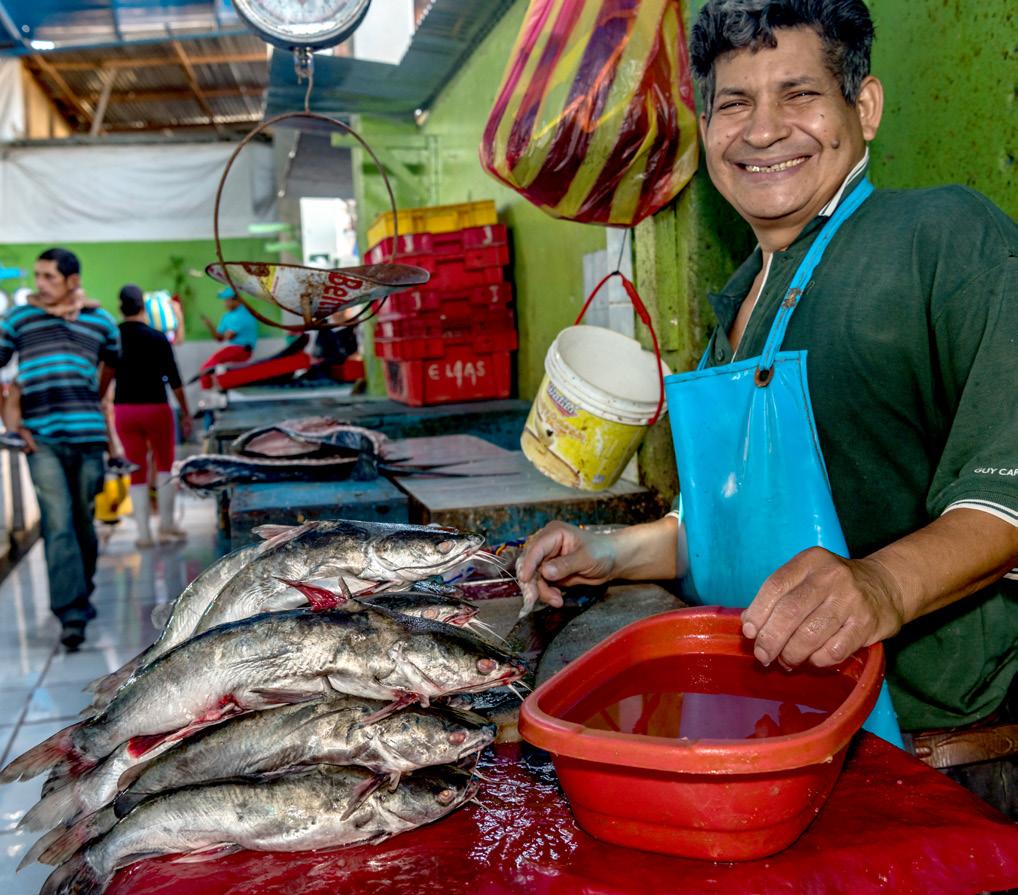
26
Supporter Spotlight
Antha Williams, head of environmental programs at Bloomberg Philanthropies
Peru has the most productive seas on the planet.
Crab is a common ingredient in Peruvian ceviche.
Fish market in Tumbes, Peru
© Oceana/André Baertschi
Bloomberg Philanthropies’ Antha Williams (second from bottom left) and Melissa Wright (third from bottom left) visit with local fishers in Southeast Asia.
© Oceana/André Baertschi
© Oceana/André Baertschi
© Bloomberg Philanthropies
Peru, a Vibrant Oceans Initiative country, has one of world’s highest catches of wild fish — a fact that both humans and seagulls appreciate.
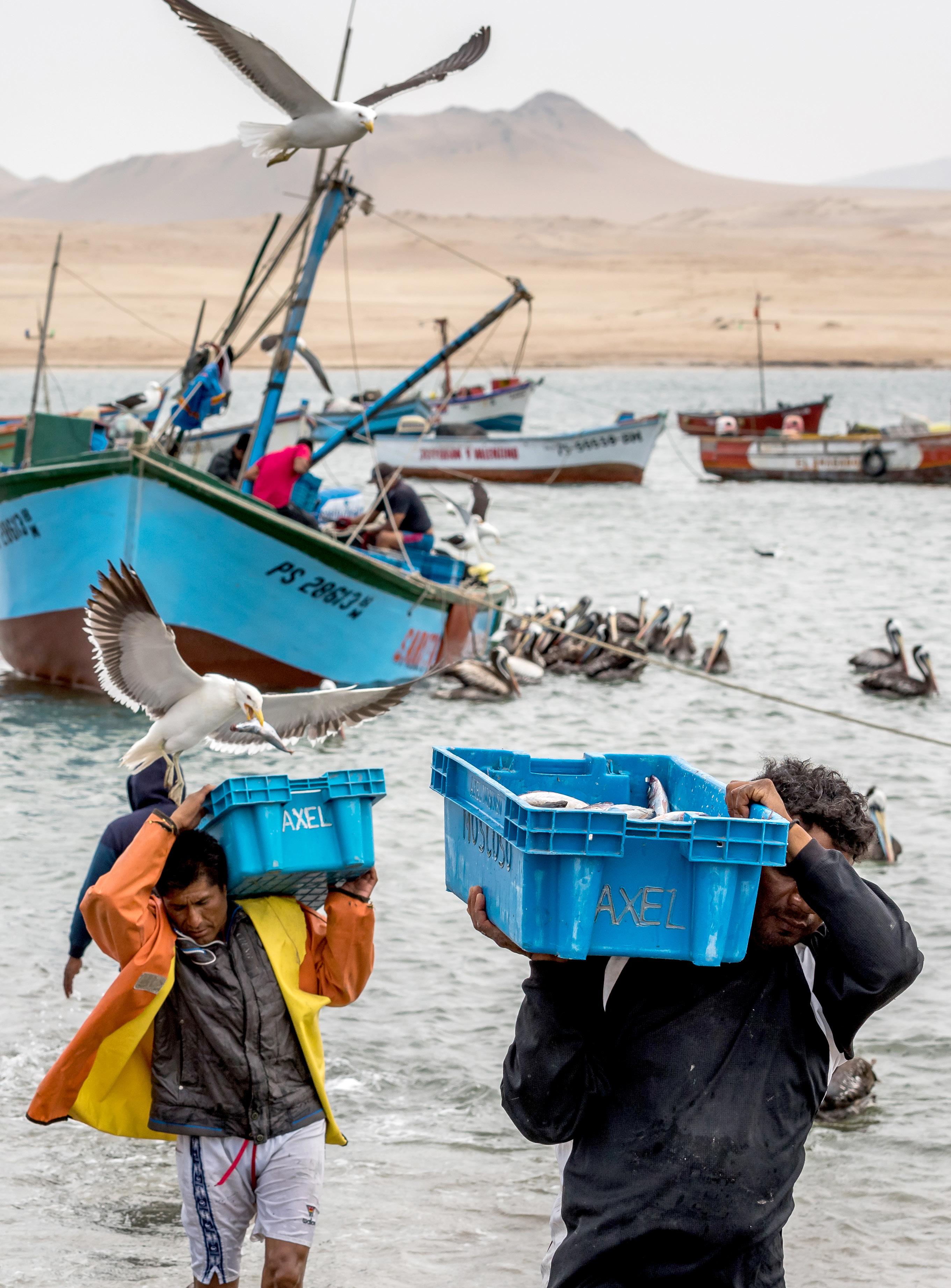
SPRING 2019 | Oceana.org27 Supporter Spotlight
© Oceana/André Baertschi
Dr. Pauly The enormous — and still uncertain — impact and size of China’s wild fish catch
China has always had impressive fisheries and aquaculture industries; indeed, the latter, which builds on over 1,000 years of experience, contributes over 60 percent of global aquaculture production. Assessing the real contribution of China’s marine fisheries to the world fish supply is another story, however.

Following a century of civil war and foreign invasions, the founding of the People’s Republic of China in 1949 provided the basis for the rapid industrialization — mainly via coastal trawlers — of fishery operations along the Chinese coast. Within a decade or two, coastal fish stocks were depleted of larger fish, some of which, like the large croaker Bahaba taipingensis, are now critically
endangered, if not extinct. Small fish, often referred to as “trash fish,” then became dominant in trawl catches. The existence of an aquaculture sector that utilized small wild fish as feed for farmed fish enabled overfishing to continue, as did massive government subsidies to what was, and still is, a largely stateowned sector.
Then, starting in 1985, China found a way to “regulate” the number of its industrial vessels: It sent them abroad to operate in the Exclusive Economic Zone of other countries, that is, it literally exported some of its coastal fisheries to the coasts of other countries in Asia, Africa and South America. This was problematic from the onset. Hainan Province in South China, from which most
of the initial Chinese distant-water fleet operated, refunded the fines that vessels fishing illegally were incurring when operating without “access agreements” — fees generally based on paying about 5 percent of the ex-vessel value of the catch. This was reminiscent of a U.S. practice in the 1960s and 1970s, when the government reimbursed the value of tuna fishing vessels caught fishing illegally and confiscated by Central and South American countries.
28
China’s huge aquaculture industry uses equally huge amounts of wild fish as feed.
© Shutterstock/redstone
These incentives, along with the logistical and diplomatic support China provided to its distant water fleet, enabled it to become the largest in the world, with an annual catch in excess of 4 million tons, taken from the waters of nearly 100 countries1. Of the total catch, about two-thirds ends up in the markets of the countries where it was harvested, or in international markets which supply the U.S. and Europe, with only one-third brought back to China, where it complements the domestic catch.
The latter is normally of around 10 million metric tons per year (see www.seaaroundus.org), but it may
2001 I published a piece in Nature which documented the wide overreporting of China’s catches2. This caused a furor in China, and at the Food and Aquaculture Organization of the U.N., which monitors world catches.
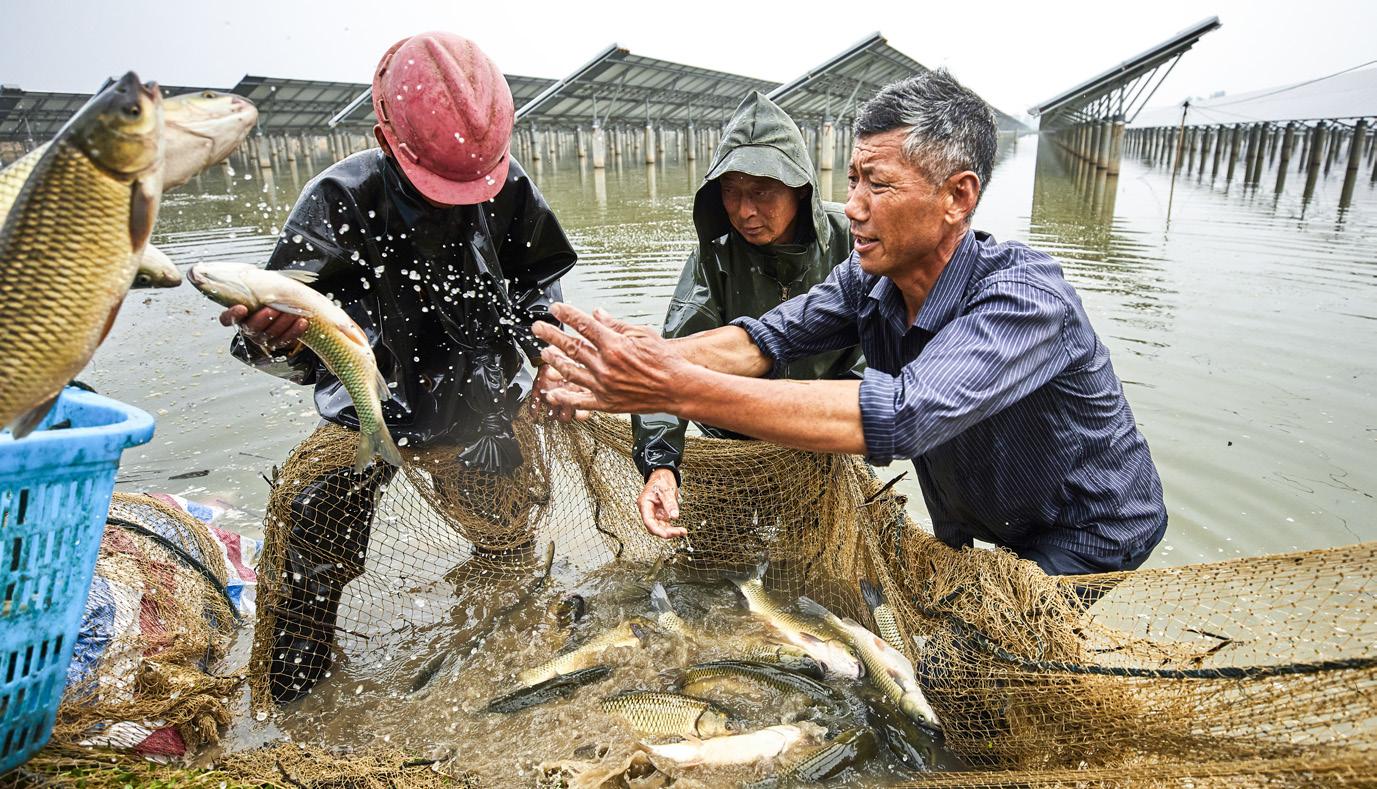
Now that the dust has settled, China has retroactively reduced the catch that it submitted to the FAO by a few million tons, but we still don’t know what the country’s catches really are. There are statistical methods that could be used to estimate Chinese marine catches without having to sample every fishing village and vessel. The next step is for China to follow
be much higher or much lower. Nobody really knows. The reason is that from 1980 to the end of the 1990s, local functionaries inflated their annual catch reports to look good to their superiors, as tends to occur in many sector socialist economies. They mostly added a similar percentage of catch every year, which led to an exponential increase of catches that became so outrageously fake that China’s central government clamped down and declared in 1998 that the domestic catch was henceforth subjected to a Zero Growth Policy. I played a part in this saga, when in
through on its ambitious five-year plans, which make accurate catch statistics and the management and rebuilding of the domestic fisheries a priority. Chinese leaders have stated that their goals are well-managed domestic seas and an appropriately limited and controlled distant water fleet. For these admirable but challenging goals to be achieved, they will need to push as hard as they can to make the appropriate changes in both their fishery management system and their fleets. All of us around the world should be prepared to help them to do that.
Chinese bahaba is a large croaker that can reach 2 meters. It is commercially extinct, and is probably extinct altogether. It was much appreciated for its delicate flesh and especially for its swim bladder, which when dried could sell for hundreds of dollars apiece.


1) Pauly, D., D. Belhabib, R. Blomeyer, W.W.L. Cheung, A. Cisneros-Montemayor, D. Copeland, S. Harper, V.W.Y. Lam, Y. Mai, F. Le Manach, H. Österblom, K.M. Mok, L. van der Meer, A. Sanz, S. Shon, U.R. Sumaila, W. Swartz, R. Watson, Y. Zhai, and D. Zeller. 2014. China’s distant-water fisheries in the 21st century. Fish and Fisheries 15(3): 474-488
2) Watson, R. and D. Pauly. 2001. Systematic distortions in world fisheries catch trends. Nature 414: 534-536.
SPRING 2019 | Oceana.org29
Dr. Daniel Pauly is the founder and director of the Sea Around Us project at the University of British Columbia’s Institute for the Oceans and Fisheries, and is a member of the Oceana board.
China is responsible for 60 percent of global aquaculture output.
© Shutterstock/Jenson
Oceana Open House
Oceana’s International Board of Directors and Executive Committee hosted an open house reception at their new headquarters in Washington, D.C. The event was attended by over 250 guests, which included Senator Sheldon Whitehouse, Congresswoman Debbie Wasserman-Schultz and Oceana’s HQ staff.

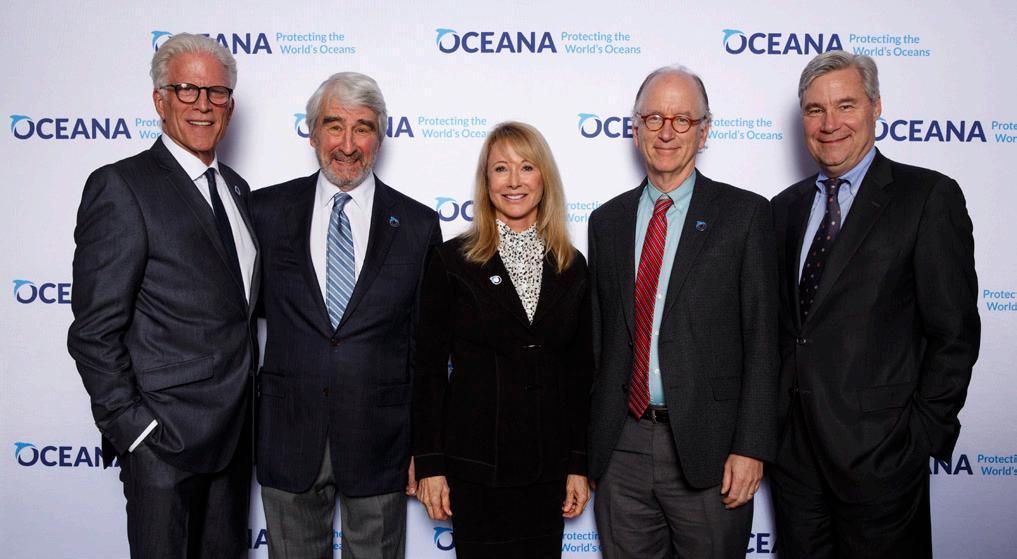
Oceana CEO Andy Sharpless welcomed guests and reminisced on Oceana’s greatest victories of the past year, including enacting an indefinite moratorium on offshore oil exploration in Belize, banning drift gillnets in California and ensuring the protection of 98 percent of Chile’s coasts. Sharpless also introduced longstanding board members Valarie Van Cleave and Ted Danson as Oceana’s new Board Chair and Vice Chair, respectively. “Oceana’s job is to win policies that help make our oceans abundant. Ted and Valarie are proven winners, and it’s great to have them leading our Board of Directors,” Sharpless noted.
Van Cleave remarked on the significance of the new board leadership: “I am honored to be Oceana’s first woman chair. Given the large number of women leaders in our organization and here tonight, I would be willing to bet that I will be the first of many.” Van Cleave is a former business executive who has spearheaded successful fundraising efforts for political campaigns
and conservation advocacy. She co-founded and co-chairs the annual SeaChange Summer Party, a benefit gala in Orange County, California. In its 12th year, the event has raised over $12 million in vital funds to restore ocean abundance.
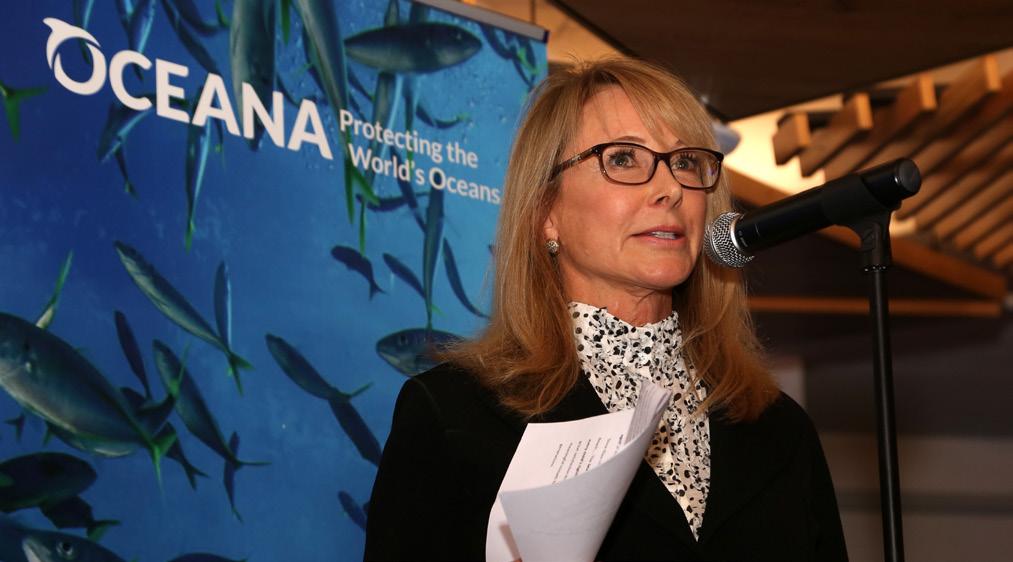
Danson began working in ocean conservation nearly 30 years ago when he founded the American Oceans Campaign which merged with Oceana in 2001. “Being a part of this organization and this board is thrilling,” he said, “many of us — occasionally — wonder if it is possible anymore to make positive change happen and Oceana is proof that it is!”
Additional newly elected officers for Oceana include Diana Thomson as Treasurer and James Sandler as Board Secretary. Other board members include Board President Keith Addis, Gaz Alazraki, Monique Bär, Herbert M. Bedolfe, III, Sydney Davis, Dr. César Gaviria, María Eugenia Girón, Loic Gouzer, Jena King, Sara Lowell, Stephen P. McAllister, Dr. Kristian Parker, Dr. Daniel Pauly, David Rockefeller, Jr, Susan Rockefeller, Heather Stevens, Simon Sidamon-Eristoff, Dr. Rashid Sumaila and Jean Weiss. Full bios of Oceana’s board are available at oceana.org/about-oceana/leadership/board-of-directors.
30
Ted Danson, Sam Waterston, Valarie Van Cleave, Andy Sharpless, Senator Sheldon Whitehouse
Oceana’s new Washington, D.C. headquarters
Events © OTJ
Board Chair Valarie Van Cleave
© Oceana/Joshua Roberts
© Oceana/Gary Cameron
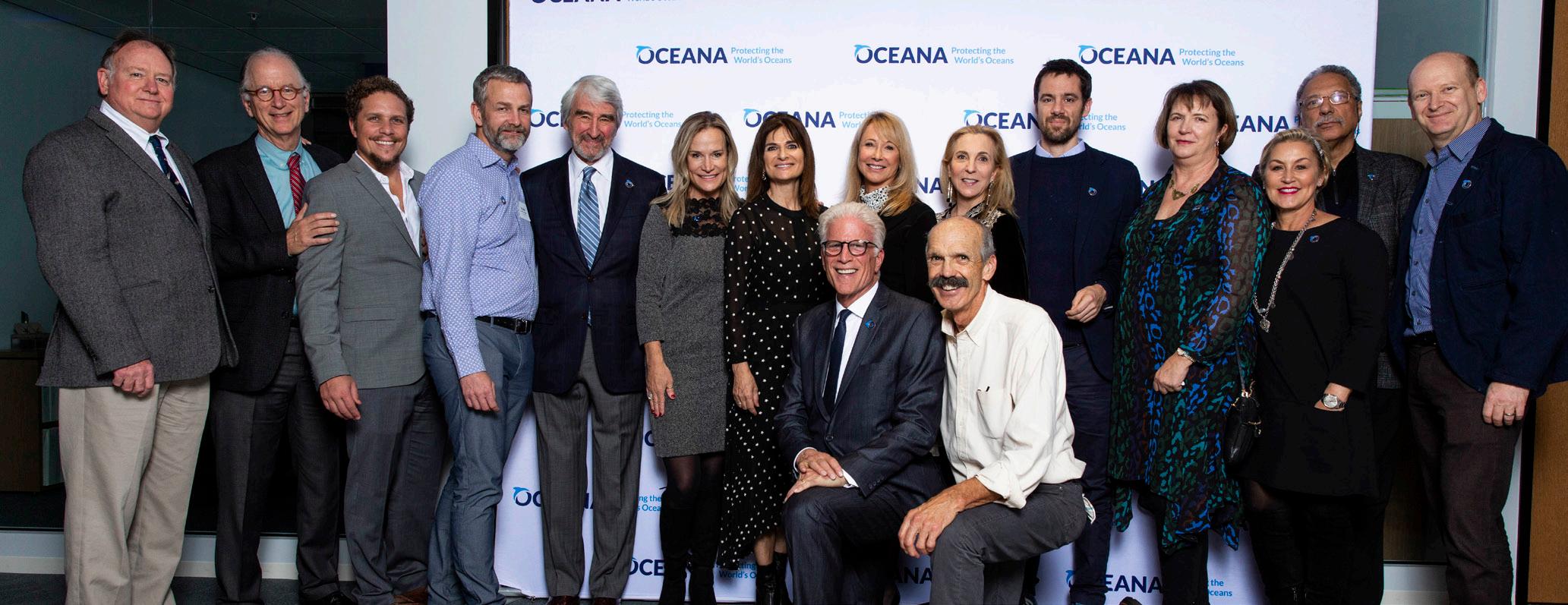
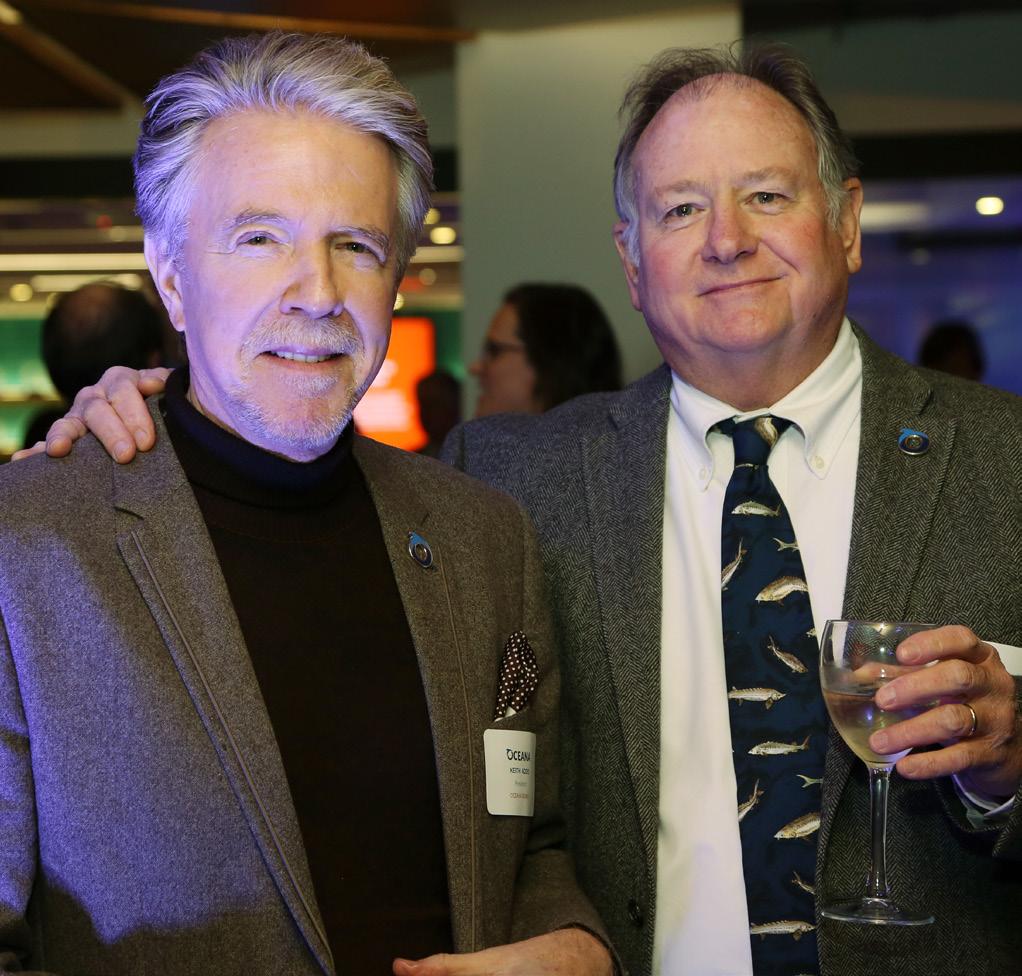
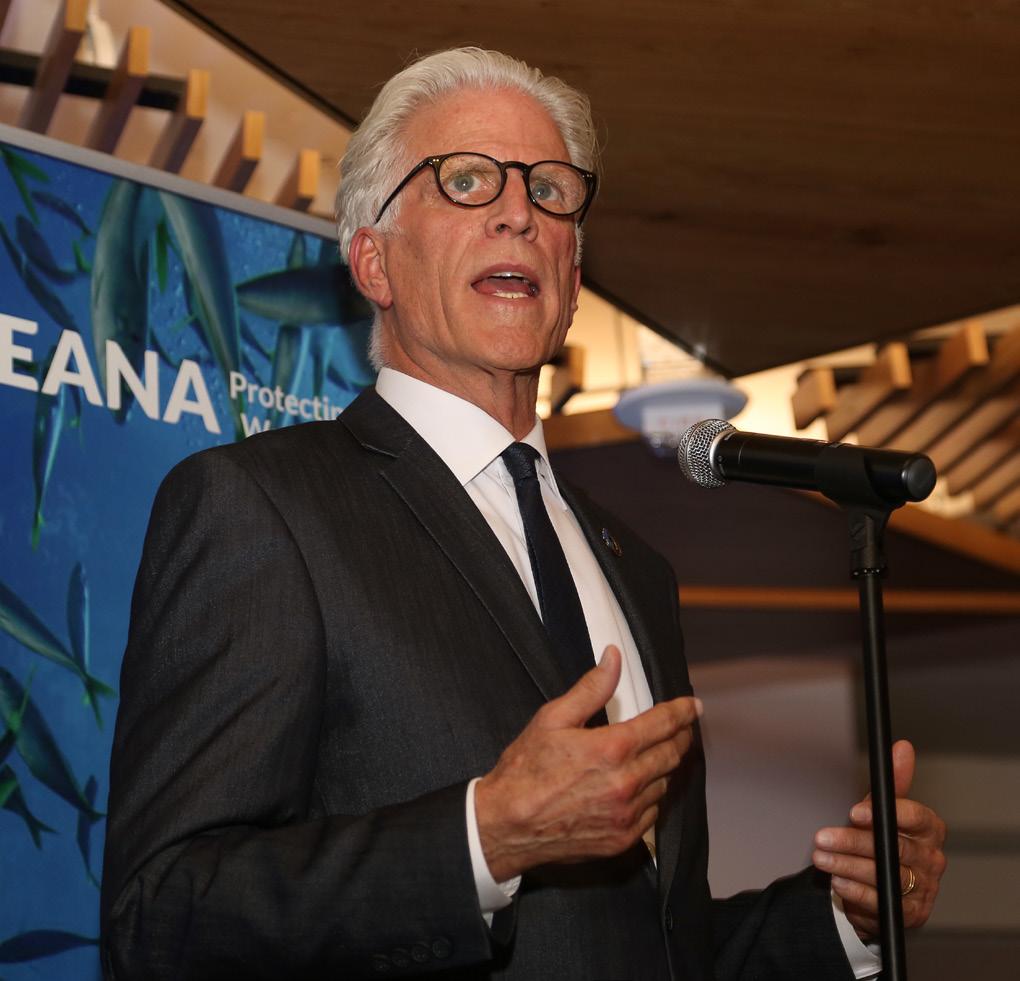
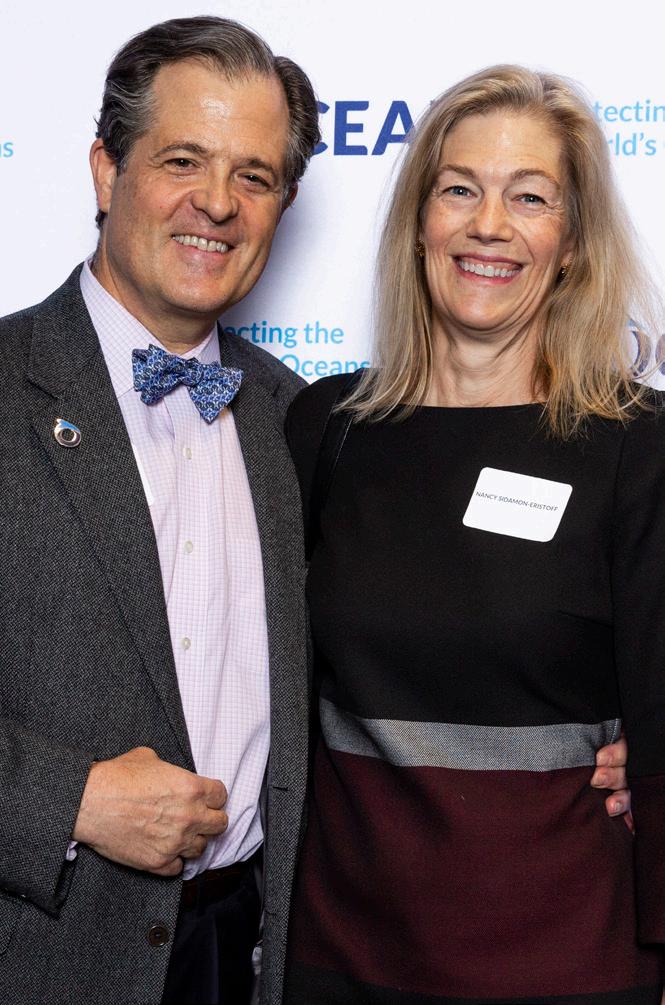
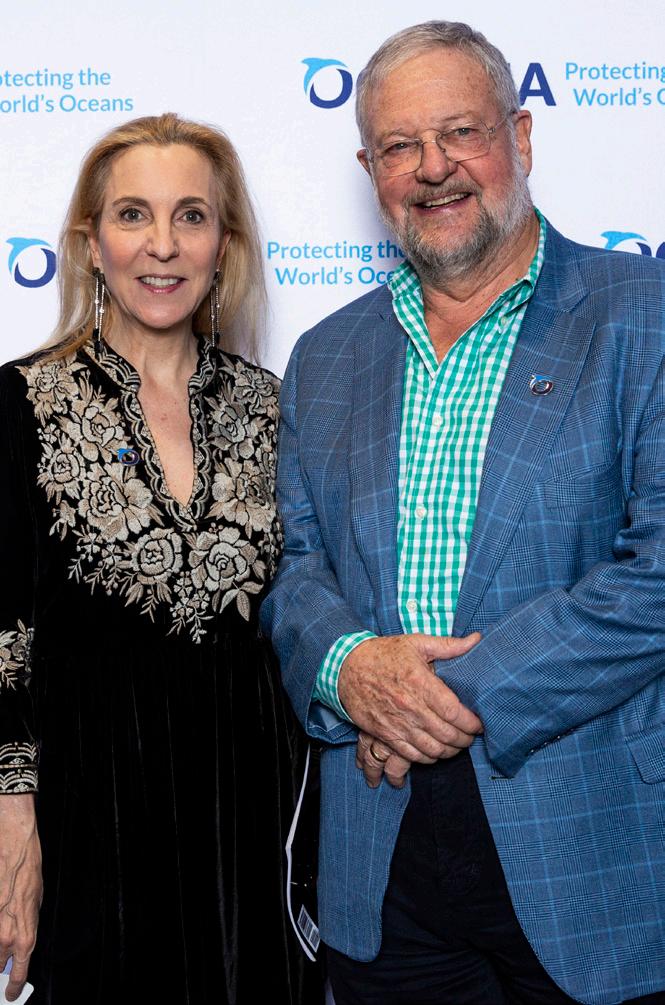
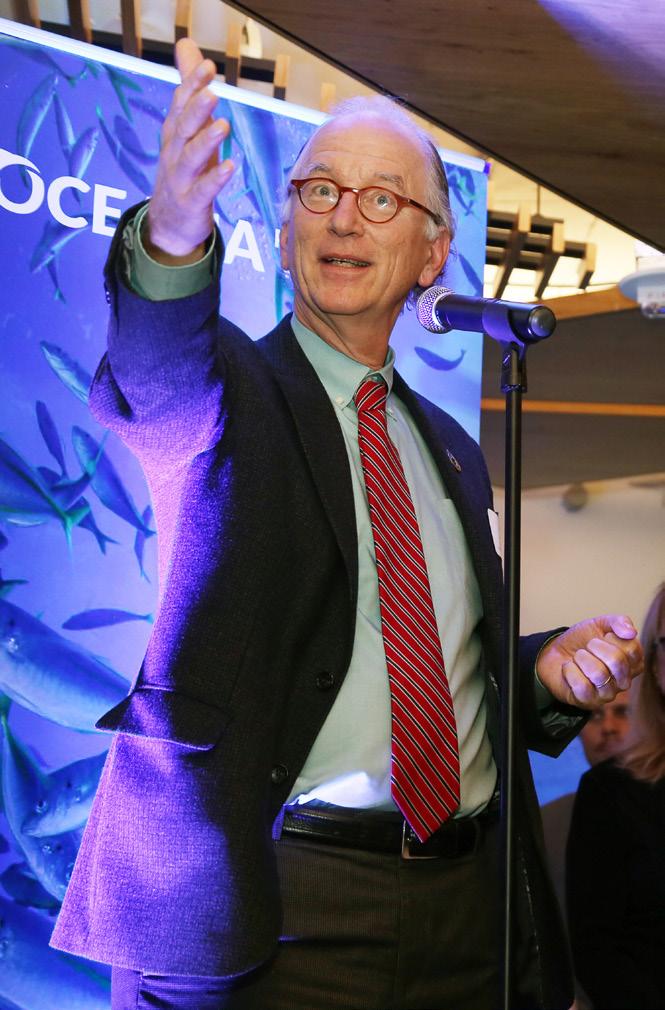
SPRING 2019 | Oceana.org31
CEO Andy Sharpless and members of Oceana’s Board of Directors
Board President Keith Addis and Former Board Chair Herbert M. Bedolfe, III.
Board Vice Chair Ted Danson
Former Board Chair Simon SidamonEristoff and Nancy Sidamon-Eristoff
Oceana CEO Andy Sharpless
Events
Ocean Council Chair and board member Susan Rockefeller with board member David Rockefeller, Jr.
© Oceana/Joshua Roberts
© Oceana/Gary Cameron
© Oceana/Gary Cameron
© Oceana/Joshua Roberts
© Oceana/Gary Cameron
© Oceana/Joshua Roberts
Fin Win Butterfish
Mark Bittman’s recipe for a delicious and overlooked U.S. fish

32 © Shutterstock/Casanisa
Talk about a case of mistaken identity:
Do an internet search for “butterfish” and you’re apt to find health blogs warning seafood lovers that this species can cause explosive gastrointestinal distress. But those sites are actually referring to escolar, a torpedo-shaped deep-sea fish full of indigestible waxes. Real butterfish, the kind caught in the shallow waters of the Atlantic, is rounded, flattened and shiny, like a silver dollar. It’s tasty — there’s a reason why it’s called butterfish — and sustainable.
According to the U.S. National Oceanic and Atmospheric Administration, butterfish are above population target levels, aren’t overfished, and are caught with fishing gear that has a minimal effect on ocean habitats. Yet aside from a few specialty markets, mostly catering to diners from countries that relish smaller fish, butterfish haven’t gained a toehold in the United States. Since they’re just 6 to 9 inches long, they have to be cooked whole — something fillet- and steakloving Americans shy away from. But if you’re happy to exchange a few bones for superior flavor, you can order butterfish online from retailers like the Fulton Fish Market or the Robert Wholey Company.
Mark Bittman’s Roasted Butterfish with Herbs
Makes 4 servings
8 to 12 butterfish, gutted, with heads on, about 3 pounds
2 tablespoons olive oil Salt and freshly ground black pepper to taste ½ cup dry white wine

½ cup any fish or chicken stock, more white wine, or water
A handful chopped fresh herbs: rosemary, tarragon, sage, basil, parsley, thyme, alone or in combination 1 tablespoon butter
From Mark Bittman’s Fish: The Complete Guide to Buying and Cooking
Instructions
Preheat the oven to 400° F. Rinse the fish well and dry them between paper towels. Put the olive oil in a skillet or baking dish that can later be heated on top of the stove. Place the fish in the oil, season with salt and pepper, turn the fish over, and season again.
Roast the fish for about 8 minutes, shaking the pan occasionally to prevent sticking. When the fish are done (there will be no trace of blood in the body cavity), remove them from the pan to a platter; put the platter in a low oven. Add the wine and stock to the pan juices and reduce slightly over high heat. Add the herbs, stir, and add the butter; lower the heat to a minimum, and stir gently just until the butter melts. Taste for seasoning, pour the sauce over the fish, and serve.
SPRING 2019 | Oceana.org33
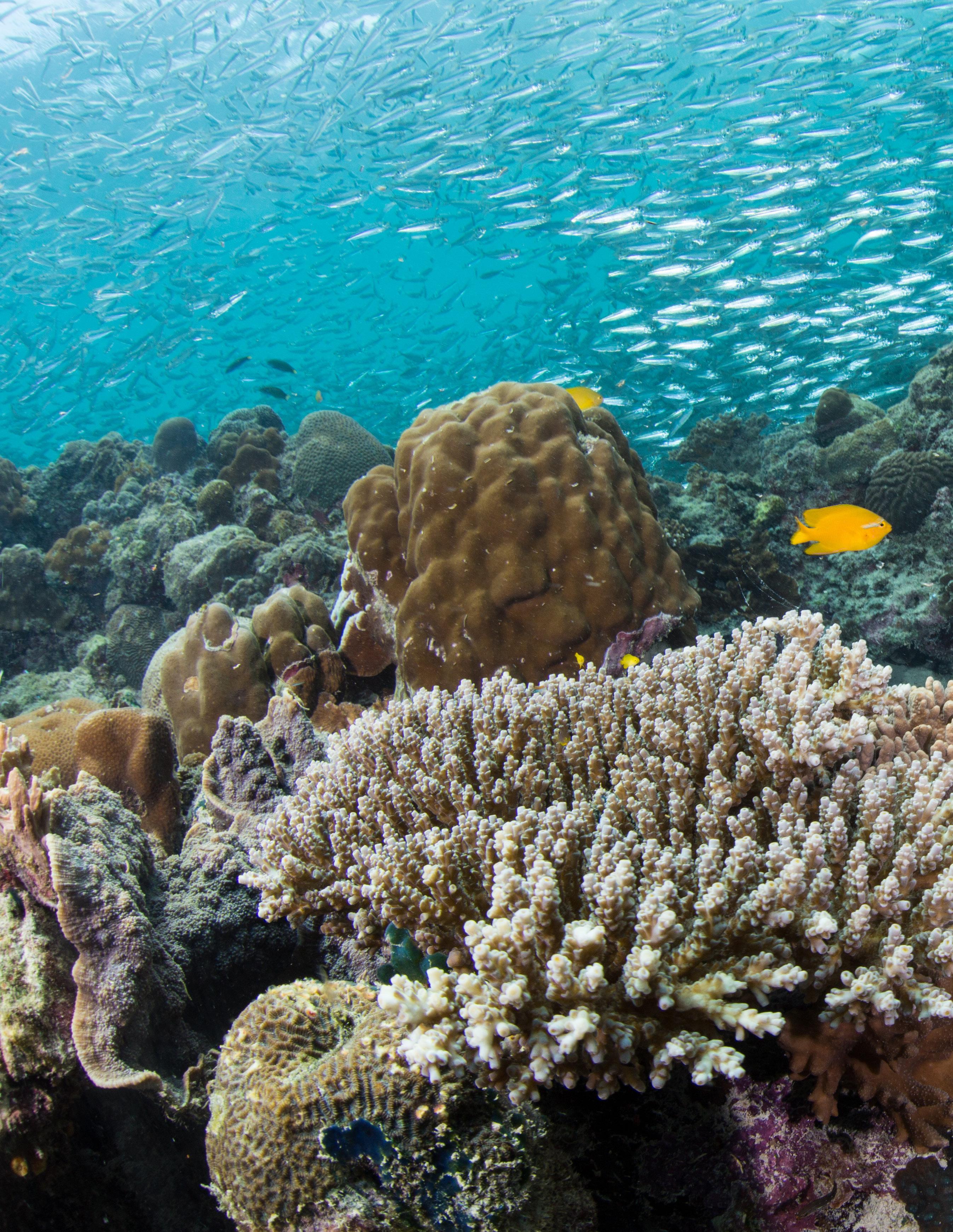
34
Off Moalboal, Cebu, in the central Philippines, coral reefs host a year-round “run” of hundreds of thousands of sardines. The swirling masses of sardines draw hungry fish and whales, as well as tourists and fishermen. Moalboal lies in the vast protected seascape of Tañon Strait. There, some local fishermen are reporting gains in seafood catches, largely due to the enforcement of a long-neglected ban on illegal commercial fishing, a major accomplishment of Oceana’s advocacy work in the region.
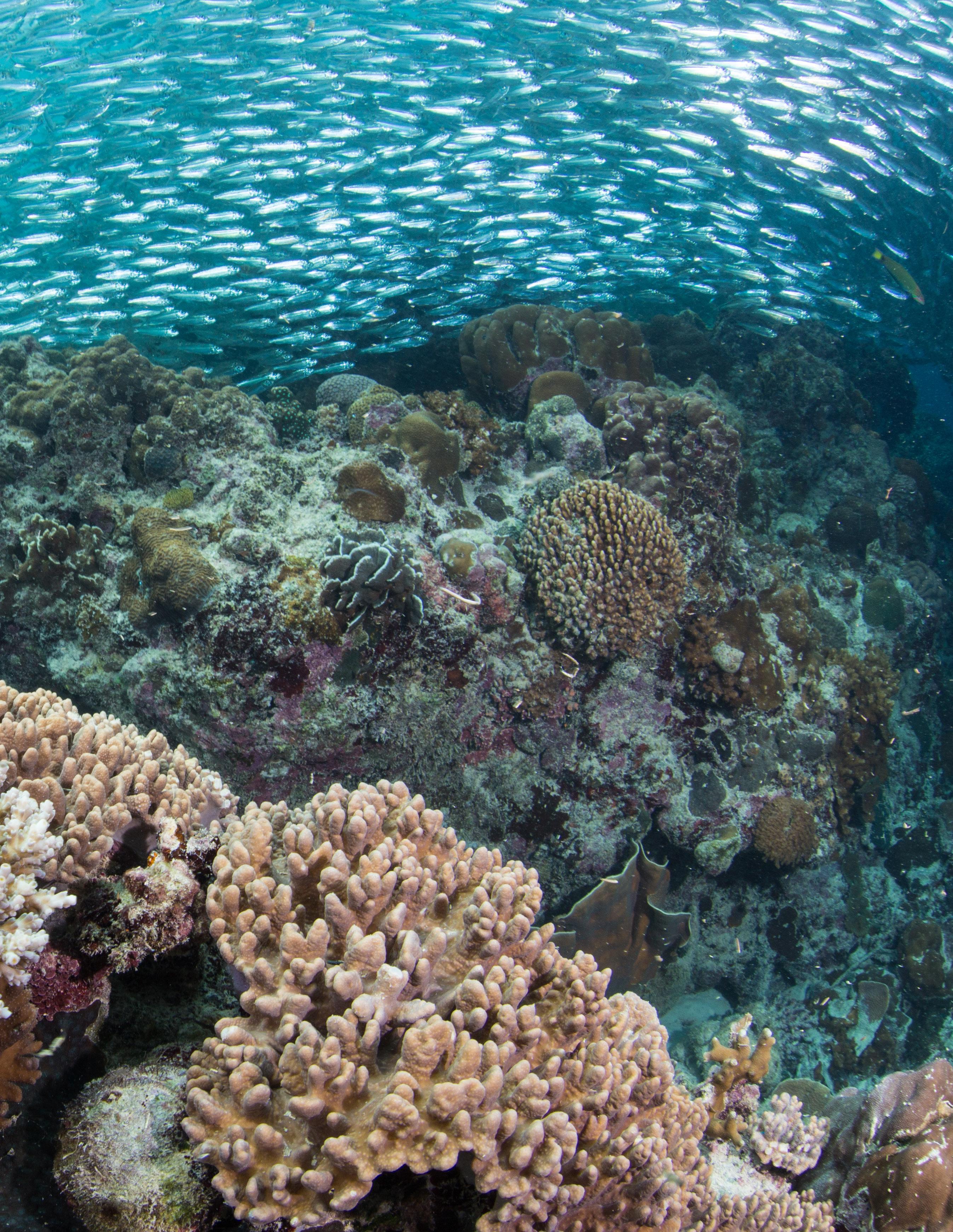
2019 | Oceana.org35
SPRING
©
Oceana/ SteveDeNeef

Global | Washington, D.C. Europe | Brussels | Copenhagen | Madrid | Geneva | London South America | Brasilia | Santiago | Lima Asia | Manila North America | Belmopan | Ft. Lauderdale | Juneau | Mexico City | Monterey | New York | Portland | Toronto Go to Oceana.org and give today. 1025 Connecticut Ave NW, Suite 200 Washington, DC 20036 USA phone: +1.202.833.3900 toll-free: 1.877.7.OCEANA You can help Oceana fight to restore our
with your
contribution. Call us today at 1.877.7.OCEANA, go to our website www.oceana.org/give and click on “give today” or use the envelope provided in this newsletter. You can also invest in the future of our oceans by remembering
in your will. Please contact us to find out how. All
to
are tax deductible. Oceana is a 501(c)(3)
as
by the
Revenue Service.
oceans
financial
Oceana
contributions
Oceana
organization
designated
Internal
Oceana’s accomplishments wouldn’t
be
possible without the support of its members.
Coconut octopus captured swimming near Tañon Strait in the Philippines. Oceana is working to protect important habitats and creatures in Tañon Strait and across the Philippines.
©Oceana/DanielOcampo
























































